

Math Project Ideas for Elementary
Share with your friends!
Who says math must consist of worksheets? Make math come alive with these math project ideas for elementary students.
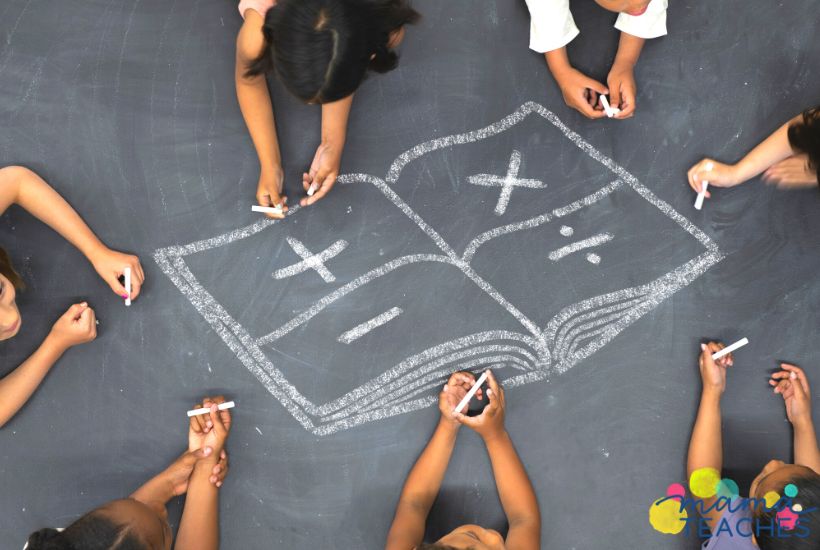
Why You Should Incorporate Elementary Math Project Ideas
Although there is a place for math drills and worksheet practice, this approach can leave students feeling that math is boring.
Bring it to life by incorporating elementary math project ideas.
Math projects can not only invigorate and inspire students, but they can also provide opportunities to practice problem-solving and creativity.
12 Math Project Ideas for Elementary Students
Students will love the challenge and fun of these math project ideas for elementary.
They work well as an opening activity or as a complete lesson!
You can even extend some of these elementary math projects to multiple days.

This article contains affiliate links to things that you might like.
Have students design and build a city using different geometric shapes.
You can use math pattern blocks or create your own shapes from colored construction paper for a 2-D city.
Or you can provide a poster board and have students make a 3-D city on top.
You can use premade 3-D shapes or decorate cardboard recycling items (like cereal boxes, tissue boxes, toilet paper tubes, etc.).
Older students can calculate the perimeter or area of buildings, roads, and parks.
Fraction Pizza
Let students create their own pizza with various toppings.
Trace a paper plate or circular pizza pan on colored paper.
Then, provide topping cutouts.
You can cut the paper into slices of 8 to explore fractions.
Or you can issue challenges like: “Arrange the toppings so they are evenly divided among the pieces.”
Or “Put on the peppers and then add twice as many pepperoni.”
Money Math Fair
Organize a fair where students can buy and sell goods using play money.
Go the extra mile and have students make the items to sell, like math activity books, calendars, or math manipulatives.
They can practice addition, subtraction, and multiplication of money while managing their budget.
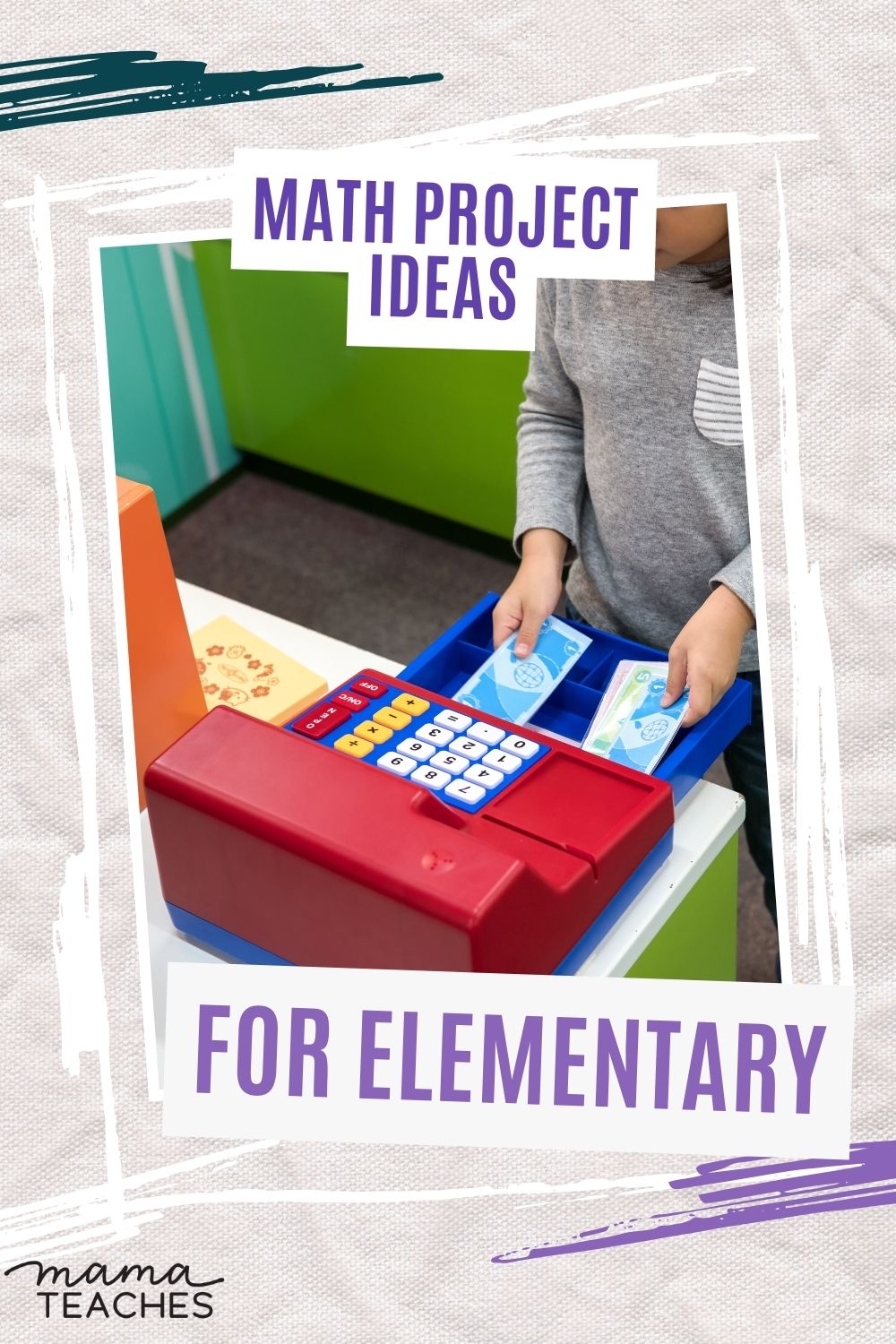
Data Detective
Have students collect and analyze data from their classmates, such as favorite colors or hobbies.
For younger students, create a pictograph with paper cut-outs to present the results.
Older student can make bar graphs or pie charts to present their findings.
Time Travel
Ask students to research historical events and create a timeline using different units of time, such as seconds, minutes, hours, days, and years.
You can make timelines by year for the lives of historical figures like Garrett Morgan and Annie Turbo Malone.
You can create timelines of days for battles or journeys, and a timeline of minutes and hours for a hugely eventful day, like a major sporting event.
Measurement Detectives
Provide students with various objects and materials to measure, such as pencils, books, or classroom furniture.
For round objects, give them string, scissors, and a yardstick or meterstick and ask them to figure out how to measure the circumference.
Mathematical Art
Encourage students to create artwork using mathematical concepts like symmetry, patterns, or tessellations.
Show them examples from artists like M.C. Escher .
They can explore different shapes and angles while expressing their creativity.
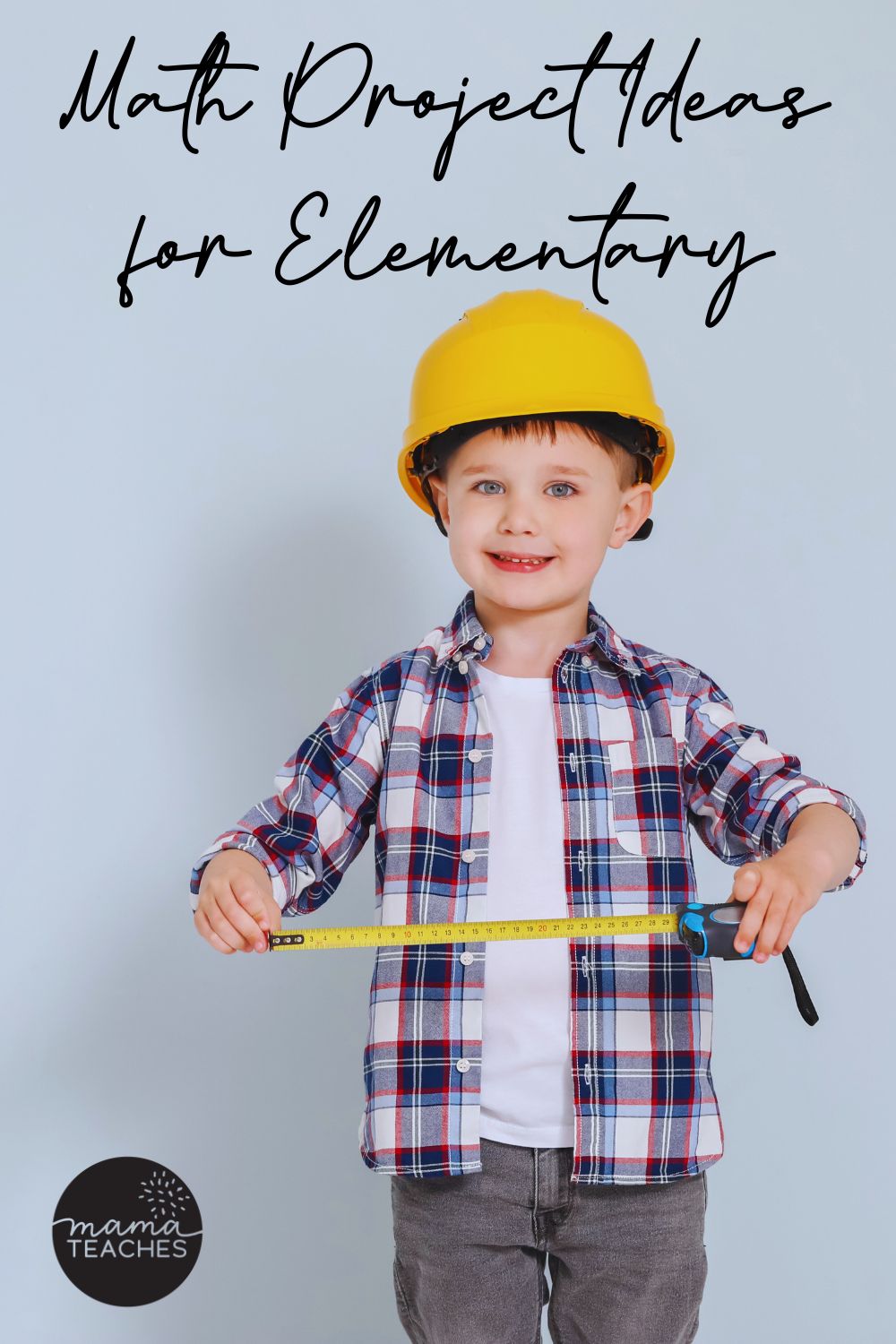
Math Olympics
Plan a mini Olympics event where students participate in math-related games and challenges.
They can compete in mental math races, problem-solving relays, and estimation contests.
You can also make games that surround engineering challenges like “tallest tower of toothpicks and gumdrops.”
Math in Nature
Take students on a nature walk and ask them to identify different shapes, patterns, symmetry, and numbers they encounter.
To make it even more fun, turn it into a scavenger hunt!
This a great opener for all kinds of math lessons. You can draw from these nature examples for many lessons to come.
Math Around the World
Assign each student a country and have them research its culture, currency, and landmarks.
They can use their research to present a math-focused presentation.
How do you convert the currency from this nation?
What are the distances between landmarks or major cities?
What is the population of various cities? Rank them largest to smallest.
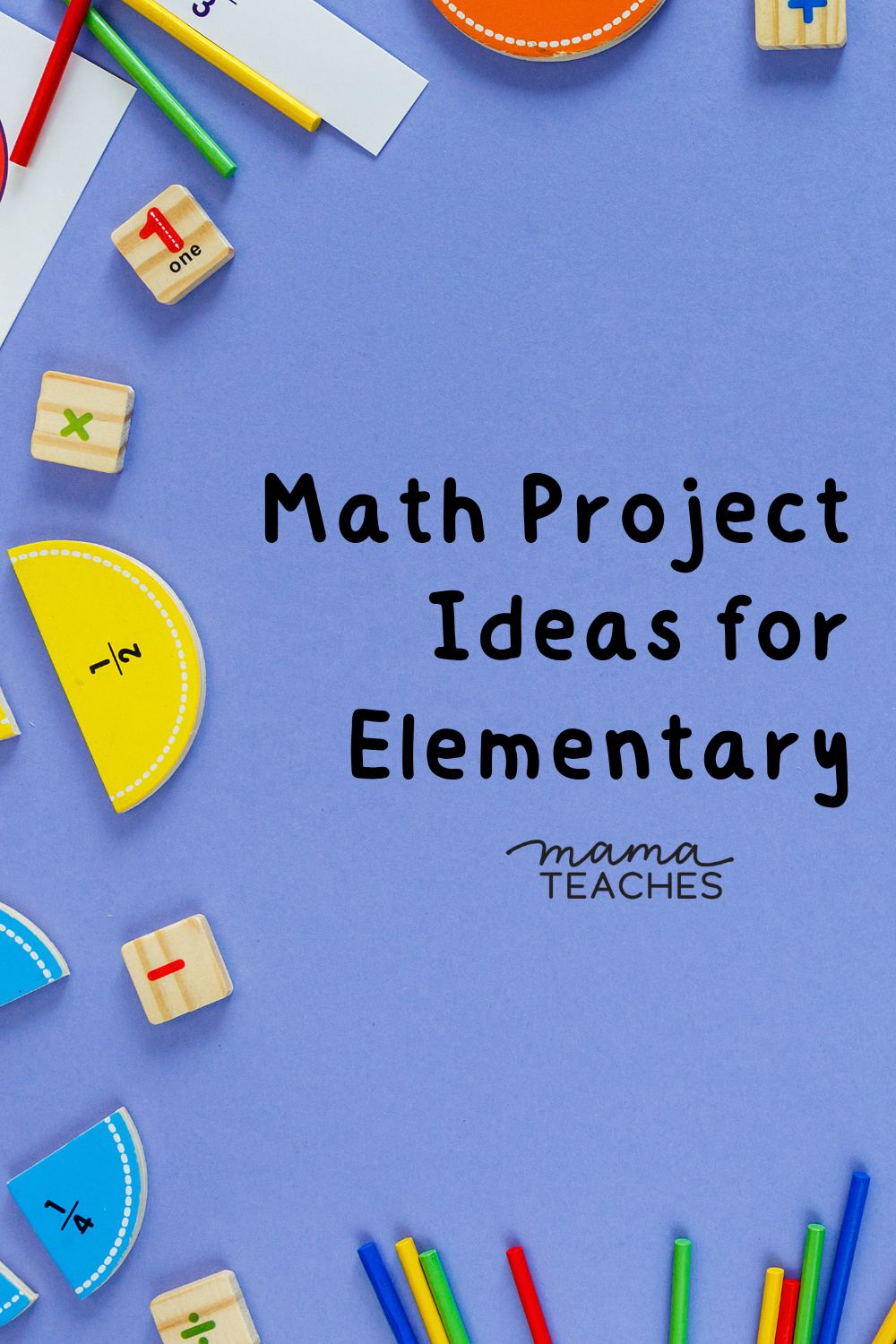
Give students measurement devices like rulers, compasses, protractors, or even plastic shapes.
Show them how to create shapes and angles using these tools.
Have them trace or draw their own designs using these devices. Then color them in to make abstract art.
This math project makes these measurement devices more approachable. It also highlights math’s connection to art.
Math Board Games
Give students a game board template and have them design their own math game.
Give them access to manipulatives, cards, dice, cardstock, and fake money to use in their game.
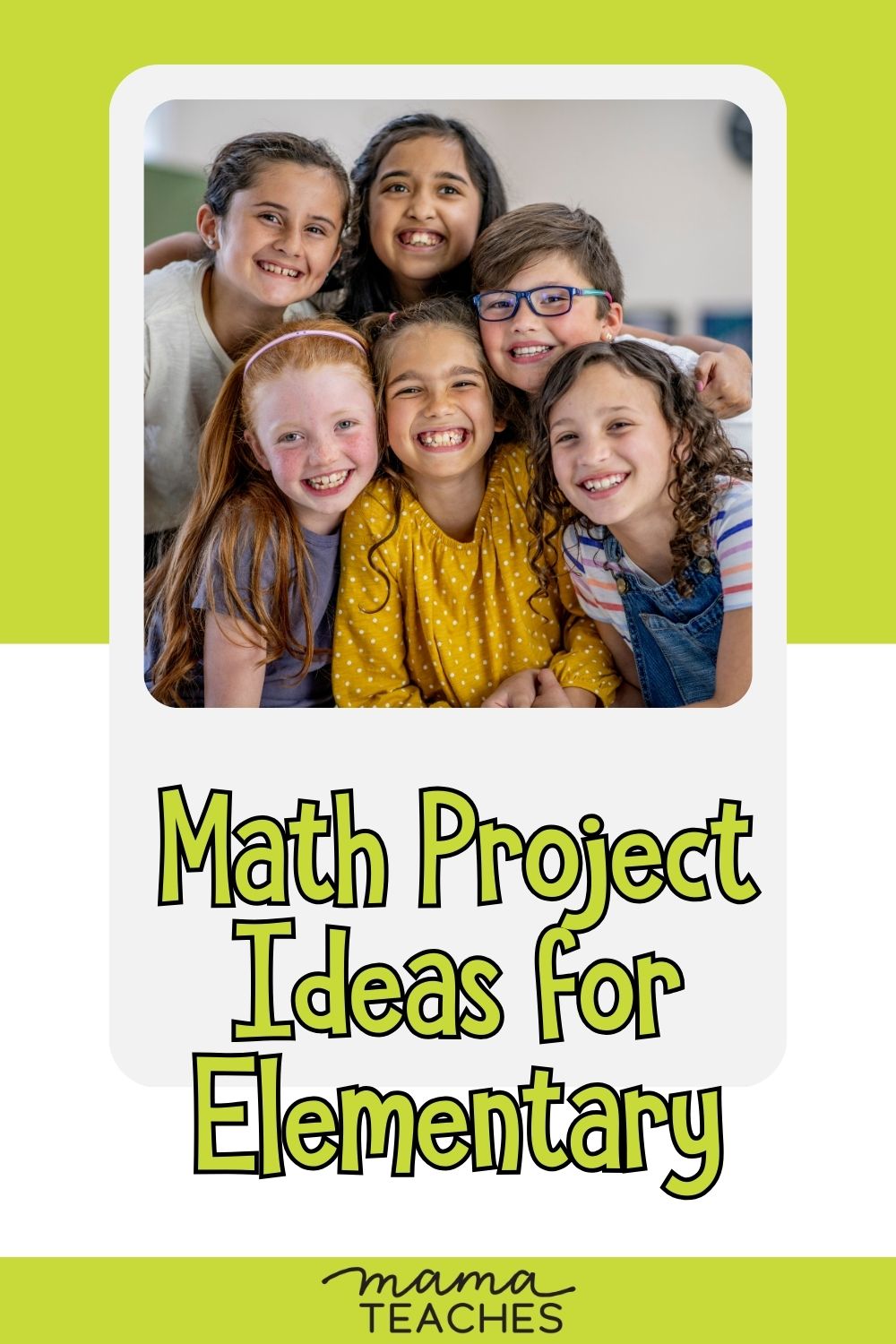
Math Projects for Elementary Students
These math project ideas for elementary students will boost your students’ love for math.
By getting them away from problem sets for a little while, they will see math’s connection to the wider world.
And, hopefully, learn to love it.
You May Also Like:
- Helping Kids Overcome Math Anxiety
- 30 Free Math Games
- Greater Gator Math Virtual Escape Room
This site uses Akismet to reduce spam. Learn how your comment data is processed .
- Math for Kids
- Parenting Resources
- ELA for Kids
- Teaching Resources

13 Best Resources for Math Videos for Kids: Math Made Fun
How to Teach Skip Counting to Kids in 9 Easy Steps
10 Best Math Intervention Strategies for Struggling Students
How to Teach Division to Kids in 11 Easy Steps
How to Teach Place Value in 9 Easy Steps
Developmental Milestones for 4 Year Olds: The Ultimate Guide
Simple & Stress-Free After School Schedule for Kids of All Ages
When Do Kids Start Preschool: Age & Readiness Skills
Kindergarten Readiness Checklist: A Guide for Parents
How to Choose Best School For Your Kid: 12 Best Tips
12 Best Poems About Teachers Who Change Lives
6 Effective Ways to Improve Writing Skills
40 Four Letter Words That Start With A
What Are the Stages of Spelling Development: Ultimate Guide
48 Rhyming Words for Kindergarten Kids
13 Best Online Teaching Tips for Teachers
How to Teach Kids to Write in 9 Easy Steps
13 Challenges for Teachers and How to Address Them
12 Best Qualities of a Good Teacher
15 Best Innovative Tech Tools for Teachers
15 Best & Fun Math Projects for Students
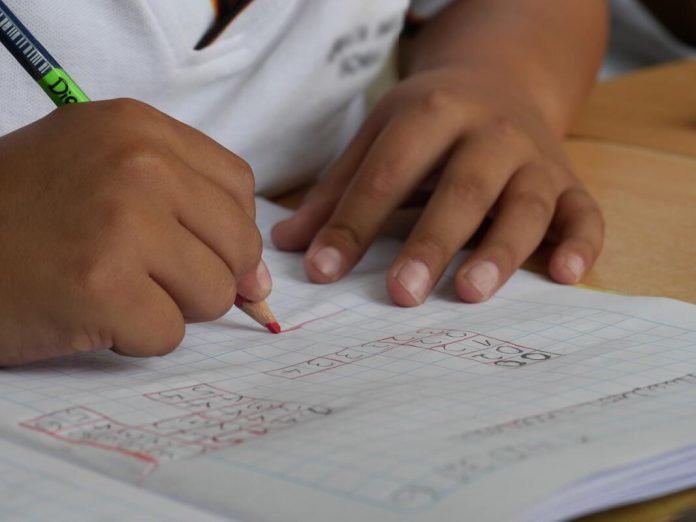
Super Easy and Super Fun Math Project Ideas for Grade 1 Students
Exploratory ideas for math projects for grade 2 students, project-based learning math ideas for grade 3 students, math project-based learning ideas for grade 4 students, advanced math projects for students in grade 5, frequently asked questions (faqs).
Math projects for students are a great way to get kids interested in math . They can be used to teach new concepts, review old ones, or just provide some fun and engaging math practice. There are tons of great math projects out there, but we’ve compiled a list of fifteen easy and engaging math projects for elementary school students—the best of the best!
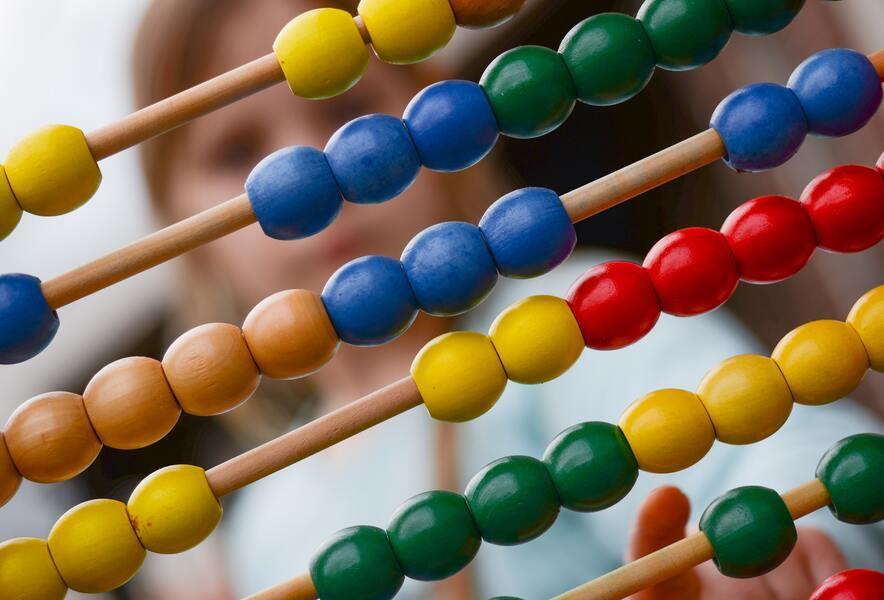
1. Scoop and Cone Matching Game
What you need:
- Cones and scoops made from felt or cardstock
- Marker or sketch pens
Description:
Write a number on the cone. Write different combinations of addition and subtraction equations to represent the number on the scoop.
Students have to solve the equations and match the correct scoop to the cone.
Skills Learned:
Addition, subtraction, and the concept of equations
2. More or Less Dot Games
- Ten frame cards
- A set of dots (or colorful buttons or plastic corks to use as dots)
- A deck of cards
Give a student a card and add some dots to it. Ask them, “How many dots are there on the card?” Once students master this, you may ask them, “What number is one more/one less?” You can also give them two cards and ask which one has more or less dots.
For two or more students, card games are a gold mine! Take a deck of cards. Snip off their corners with numerals written on them. Place the cards with their face downward. Ask each student to turn up a card. Ask them to tell whose card is “more” or “less.” Each correct answer wins them a point!
Visualizing numbers, understanding the concept of more or less, comparing numbers, addition, and subtraction
3. Shape Graphs
- Different geometric shapes in different colors and sizes
- Graph papers with large rows and columns (with rows mentioning shape names and columns mentioning numbers)
- Some crayons
Distribute some graph paper among the children. Spread out some shapes in front of them. They have to find out how many shapes of each type there are and color that many boxes of relevant columns.
Recognition of geometric shapes by their names, and understanding and representing data in pictorial form
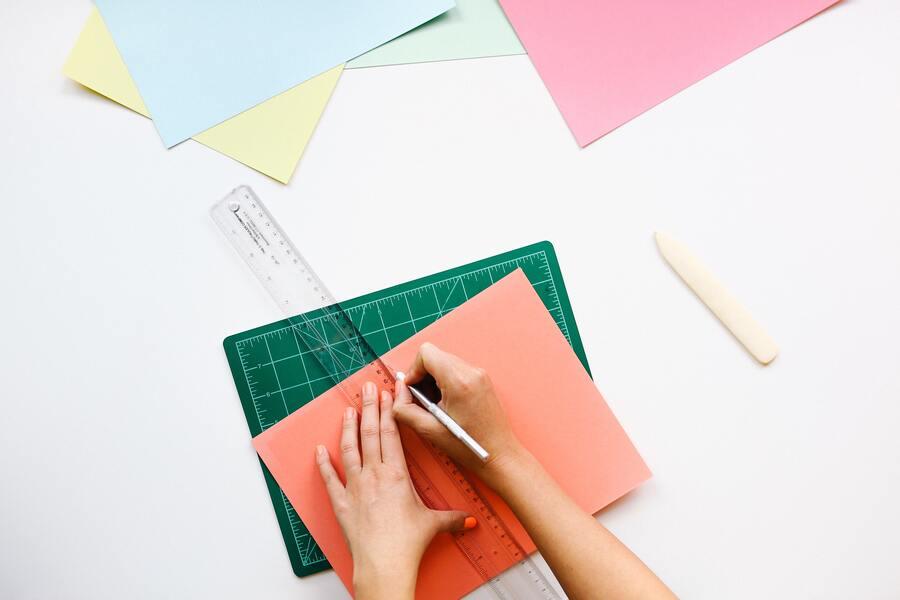
4. Elementary Architects
- Instructions and photos of room designing projects
- 2-page student project sheet to promote reading in math
- Note-taking forms
- Sample blueprints for reference
- Brainstorming sheet
- Grid paper templates
Ask the students to design their rooms, calculate areas, and estimate flooring needs by reading the instructions, looking at the photos, and taking notes.
Students love to play architects. Allow them sufficient room for being creative to promote their spatial awareness.
Reading comprehension, estimation, area, and perimeter calculation
5. M&M’s Math Game
- A box of colorful m&m’s
- Graph papers for kids
Let your students dig into the box of m&m’s and take a few each. They have to count how many m&m’s of each color they got. If they count m&m’s of each color correctly, they can eat them! Otherwise, they have to return the m&m’s to the box and try again!
As they master their skills, you can take this math game to the next level. They can make a graph using graph paper and crayons! You may have to help them label the graph and the graphing part itself.
Counting, addition, making graphs
6. Hit a Home Run for Math Fact Fluency
- DIY baseball game board with math facts
- Number cards
- Counters to use as baseball players—9 for each team
Write the numbers 1 to 9 in one row and 0 in the next row to make a baseball diamond.
Help your students write math facts such as doubles (2 + 2, 3 + 3, etc.), near doubles (9 + 8), addition/subtraction of 10 (8 + 2, 5 + 5), and related subtraction facts (7 – 3, 9 – 6) on the number cards.
To play, have each student roll two dice. They get to move one of their baseball players the number of spaces corresponding to the first die and then answer the math fact that corresponds to the number they landed on. If they answer correctly, they get to roll again. The first player to get three of their baseball players “home” wins!
Math facts fluency, addition, subtraction

7. Place Value in the Wild Math Project
- Digital and printable version of a student guide with detailed instructions and visuals
- Student printables or digital recording sheets guiding students on how to select a habitat, research animals of that habitat, note sizes and lifespans of these animals, etc.
As third graders research animals as expedition scouts for Wildlife Explorers International, they learn about place values through various activities, such as representing numbers in different ways, comparing numbers, and estimating lengths, heights, and lifespans of animals.
You can ask students to use standard numbers, expanded forms, and word forms of numbers. They may also be introduced to decimals through this project.
Place value, estimation, decimals
8. The Time of Your Life
- A printable or digital student guide with detailed instructions, visuals, and student printables
- Analog and digital clocks (one per student pair)
In this project, students learn to read the time on both analog and digital clocks. They also practice setting the time on these clocks.
As they work in pairs, they take turns being the “teacher” and the “student.” The teacher explains to the student how to read the time on a clock. Then, the student sets the time on the clock according to the teacher’s instructions.
Or they tell how many seconds, minutes, or hours have elapsed in doing an activity.
It’s a great activity for third graders, where students can win prizes for being the best timekeepers!
Telling time, elapsed time
9. What’s Your Angle, Pythagoras?
- A scorecard
- Child-safe compass (optional)
Pythagorean principles are put to the test in this game! Players use a protractor and ruler (or child-safe compass) to draw angles and then measure the length of the sides of right triangles. The goal is to have the longest hypotenuse at the end of the game.
You can call out “Right-Angled Triangle” randomly, and the students have to arrange themselves in the shape in a flash. Those who do it correctly win!
You may also call out “Right Angle”, “Acute Angle”, or “Obtuse Angle” where students have to pair up instantly. If some fail to do it, they are out.
Angles, Pythagorean theorem

10. Calendar Math in the Classroom
- A printable or digital calendar template
A perfect math review technique for fifth graders, calendar math is a great way to engage them in the concepts of days, weeks, months, and years. You have to display a calendar in the classroom and point out various aspects of it to the students. For example, you can ask them how many days there are in February, or how many months have 31 days, etc.
You can also use the calendar to teach place value. For instance, you can ask students to name the day on which their birthdays fall this year and write it down. Then, they can find out the day on which their birthdays will fall next year and so on.
This activity can be done with a physical calendar or a digital one. Students can use real-world objects like coins or candy to help them understand the concepts of place value, addition, and subtraction.
Days, weeks, months, years, place value, addition, subtraction
11. Run a Pizza Place
- Pizza boxes or paper plates
- Colorful cardboard pizzas
Bring fraction to life with this fun activity! Students run their own pizza place, where they take orders, make pizzas, and serve them to customers.
They can use play money to buy pizza toppings and then charge customers for their pizzas. They can also use fraction strips or circle fractions to create pizzas of different sizes.
Such math projects for students teach them concepts like halves, thirds, fourths, eighths, and more. And children will have a blast doing it!
Fractions, equivalent fractions, comparing fractions, adding and subtracting fractions
12. Hot Cocoa Project!
- Hot cocoa stall
- Marshmallows
- Whipped cream (optional)
- Chocolate shavings (optional)
- Recipe book
- Play money or real money
An excellent activity for young entrepreneurs (under adult supervision), this hot cocoa project simulates a hot cocoa stand. Students can make and sell hot cocoa to their classmates, using real or play money.
They can follow a recipe to make the hot cocoa mix, and then use it to make individual cups of hot cocoa. They can also add marshmallows, whipped cream, and chocolate shavings to their hot cocoa, and charge extra for these toppings.
This activity is a great way to teach children about money, measurement, and fractions. And they’ll love getting creative with the hot cocoa mix!
Money, measurement, fractions, addition, subtraction
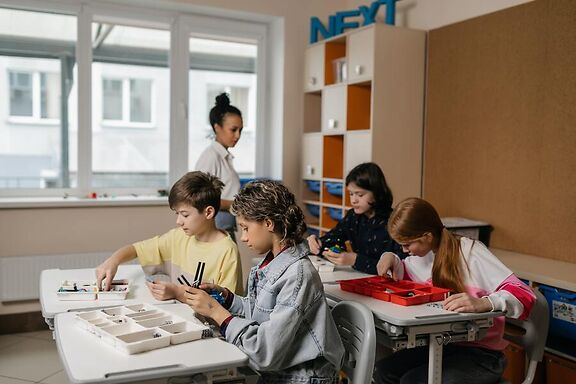
13. Performance Math Art
- Props or costumes (optional)
- A video recording device (such as a smartphone)
Divide students into groups of 2 to 4 and ask them to prepare a performance art (dramatic poetry, song, or a skit) to explain the Order of Operations (or any other mathematical concepts, such as area and perimeter, exponents and roots, or geometry).
After they have practiced, film their final performance. Students can watch the videos to revise the concept later.
Students may also review each other’s performance in terms of delivery, clarity, and creativity to give constructive feedback.
Order of operations, area and perimeter, exponents and roots, geometry
14. Probably Probability
- DIY probability tables
An inspirational idea for kinesthetic learners, this activity gets students up and about as they experiment with probability.
Provide each student with a die (or multiple dice) and a coin. Ask them to roll the die (or dice), flip the coin, and record their results in a table. They can create their probability tables.
Once they have collected enough data, they can look for patterns and predict the probability of certain events.
Probability, independent and dependent events, expected values
15. The Theme Park Project
- Theme Park templates (for guidance)
- Construction paper
- Glue or tape
- Markers or crayons
- Small toys (optional)
This project is perfect for a math class that is learning about geometry and measurement. Students will use their knowledge of shapes, angles, and measurements to create a mini theme park.
They can start by choosing a template (or creating their own) and then cutting out the shapes from construction paper. Once they have all the pieces, they can assemble their theme park and add details with markers or crayons.
They can also add small toys to their theme park if they wish. Finally, they can measure the area and perimeter of their creation.
Children can dream up new rides, give them outlandish names, create menus for concession stands, and research healthy and junk foods!
A lot of math happens in everyday life if we just look for it.
Geometry, measurement, area, perimeter
By working on these fun projects, students can learn and practice various math skills, from basic counting and graphing to more advanced concepts such as fractions and decimals. These math projects for students can be used to supplement your regular math curriculum or as a standalone activity. Either way, your students are sure to enjoy them!
How can I make sure my students are engaged in the project?
Make sure to give your students a chance to be creative and have fun with the projects. For example, with the “Theme Park Project,” encourage them to develop their own designs and be as creative as possible with the details. With the “Probably Probability” project, let them experiment with different ways of collecting data and see what patterns they can find.
Do I need to prepare anything in advance?
It largely depends on the project you choose. For some projects, you may want to prepare templates in advance. For others, such as the “Probably Probability” project, you only need dice and coins.
How long should the projects take?
Again, it depends on the project. Some math projects for students require several days to complete. Others can be done in one class period or a few minutes.
Most Popular

15 Best Report Card Comments Samples

101 Best Riddles for Kids (With Explanation)

40 Best Good Vibes Quotes to Brighten Your Day
Recent posts.

50 Best Mother’s Day Quotes That Your Mom Will Love

Math & ELA | PreK To Grade 5
Kids see fun., you see real learning outcomes..
Watch your kids fall in love with math & reading through our scientifically designed curriculum.
Parents, try for free Teachers, use for free

- Games for Kids
- Worksheets for Kids
- Math Worksheets
- ELA Worksheets
- Math Vocabulary
- Number Games
- Addition Games
- Subtraction Games
- Multiplication Games
- Division Games
- Addition Worksheets
- Subtraction Worksheets
- Multiplication Worksheets
- Division Worksheets
- Times Tables Worksheets
- Reading Games
- Writing Games
- Phonics Games
- Sight Words Games
- Letter Tracing Games
- Reading Worksheets
- Writing Worksheets
- Phonics Worksheets
- Sight Words Worksheets
- Letter Tracing Worksheets
- Prime Number
- Order of Operations
- Long multiplication
- Place value
- Parallelogram
- SplashLearn Success Stories
- SplashLearn Apps
- [email protected]
© Copyright - SplashLearn

Make study-time fun with 14,000+ games & activities, 450+ lesson plans, and more—free forever.
Parents, Try for Free Teachers, Use for Free
Check Out the New Website Shop!

Novels & Picture Books

Anchor Charts

Math Projects: Differentiated Hands-On Learning
By Mary Montero
Share This Post:
- Facebook Share
- Twitter Share
- Pinterest Share
- Email Share
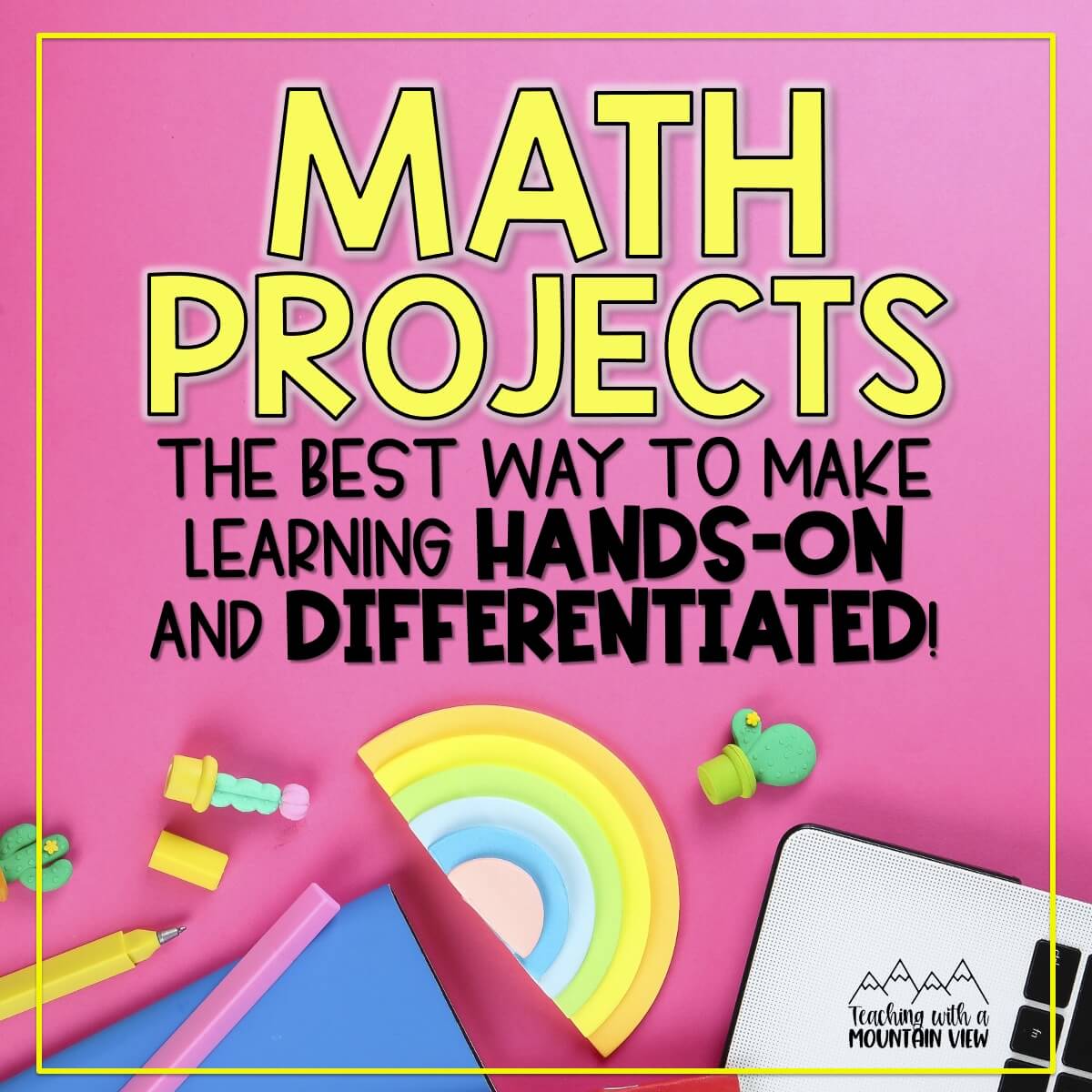
When I’m looking for rigorous practice that’s so fun the students almost forget they’re learning, I turn to math projects! These projects hold so much learning power with their real-world connections, differentiation options, collaborative learning opportunities, and numerous avenues for cross curricular learning too. PLUS they’re printable and digital for even more flexibility.
I’ll never forget the first math project I made. I was the gifted coordinator and teacher, and we had just finished working on multiplication. My students had a pretty solid conceptual foundation of the skill, but they needed a bit more real-world practice. At the time, my husband worked in hotels, so we sat down together and made my very first math project, The Resort Report. At the time (back in 2012), there was simply NOTHING like this available on TpT, so I had such a great time designing it and determining the best way to make the math project work. Once I implemented the math project into my classroom, there was SO much math skill practice, SO much real-world math relevance, and SO much engagement. My students were literally BEGGING for more. From that point forward, I started creating math projects for every unit we were doing. My students absolutely loved them, and these math projects have become a cornerstone of my teaching.
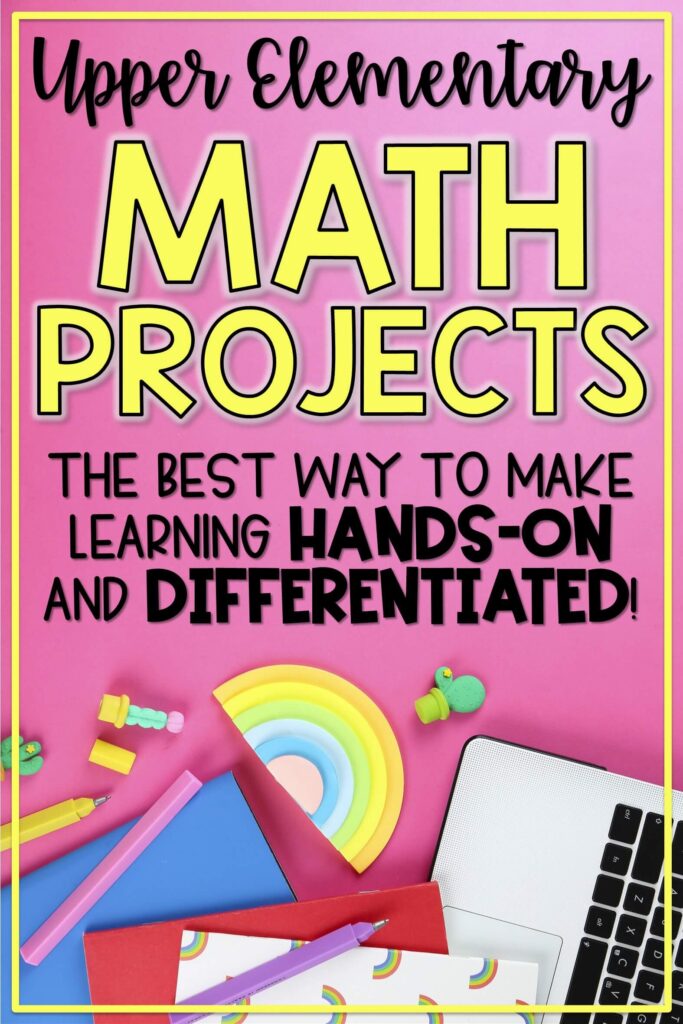
How To Use Math Projects
- Cumulative review or assessment project for end of unit . Each of my math projects is designed to show mastery of MULTIPLE skills related to the concept at hand. Many eliminate the need for traditional assessments, which is a win-win for both students and teachers.
- As seasonal practice. Upper elementary students love seasonal fun, too. The seasonal math projects are specifically made for this!
- Anytime review . Math projects are perfect at the beginning of the year for brushing up on the previous grade’s skills, during test prep, or at the end of the year when you’re looking for structured fun.
- Math centers . The projects are great for collaborative learning and work so well as ongoing math centers. Sometimes, I will break up the pages and make each page a different center or math station.
- Differentiation . You can pull out and assign specific pages for each student or group. This is such an easy way to differentiate, and students rarely even realize they are working on separate pages. I design almost all of my math projects to have pages that stand alone, so they are easy to pick and choose from.
- Early finisher projects or warmups . Students can keep their current project in a folder for easy access. These are particularly awesome for enrichment as most require some level of higher-order thinking. THESE ARE NOT BASIC WORKSHEETS.
- At-home math homework. Ditch the worksheets and send these math projects home for some at-home practice!
- As the cornerstone to a Project-Based Learning Unit. While I don’t claim that these math projects are PBL (they are missing a few components), they are PERFECT to integrate into our project-based learning units. I have seen teachers do AMAZING things alongside these math projects… students design full hotels including scale models, they created a real classroom movie theatre, etc.
- As the basis for mini room transformations. I simply don’t have the energy for massive room transformations, but these projects all lend themselves SO well to mini-themed room transformations. For example, when we are completing The City of Shapes Perimeter and Area Math Project , I get each student a hard hat from Oriental Trading. For Place Value Detectives , they get their projects in a detective folder. For the Great Zoo Review , they put on a zookeeper visor and earn an animal coin (again from Oriental Trading) as salary for their hard work on each page. The options are limitless, and a little bit goes a LONG way to keep your students engaged. They truly LOVE this little aspect if you are able to work it in.
What Sets These Math Projects Apart?
Every time I set out to create a new math project, I look at the concept we are working on and outline all the different ways that skills needs to be practiced. I consider how I can review the skill and ways that I can encourage students to really stretch their thinking with the concept. It’s incredibly important to me that my math projects aren’t just another worksheet with a pretty theme, and I go to great lengths to create in-depth projects that help students excel. Every single one of my math projects has been designed to enrich and extend student thinking.
More Math Project Ideas
Here’s some feedback from classroom teachers on how they used these math projects.
I love that it’s “real life” math. The students get to use the skills that they’ve learned and apply it to “real life” situations to see that math really is everyone! – Seasonal Bundle
Such a fantastic set of ready-to-go, super engaging projects. My students were so excited to complete these challenging, appropriate, real-world scenarios using both new and old math skills. Students got to use varied strategies to figure out what methods worked best for them, the differentiation was perfect, and they were easy to break down into bigger or smaller chunks depending on the group and level. – Seasonal Bundle
I have used these projects in the classroom as early finisher packets so that students have something to be working on. I have also used them in my remote weeks as lesson follow up. The kids are very engaged and I love that they tie our topics in with the season. – Seasonal Bundle
This is a great, easy to use, resource for my students during our time in distance learning. I love doing STEM activities and can actually create an activity based on each of these Math Projects! I love it! The assessments are amazing! I will continue to use them when we get back in the classroom! – Concept Bundle
These projects are fantastic! I am always looking for ways to make math more hands on for my students and this was exactly what they needed. These activities give my students a purpose for using what they have learned and they are having fun doing it! – Concept Bundle
A Closer Look At A Few Favorites
I use both concept-based math projects to focus on specific standards and seasonal math projects that integrate several skills. Here are some of my favorites!
Road Trip Math: I love using this road trip math project at the end of the year or the beginning of the year as we talk about summer break. This one also has FREE road sign math task cards that work well with it. It covers SO MANY math skills like problem solving, place value, money, etc.
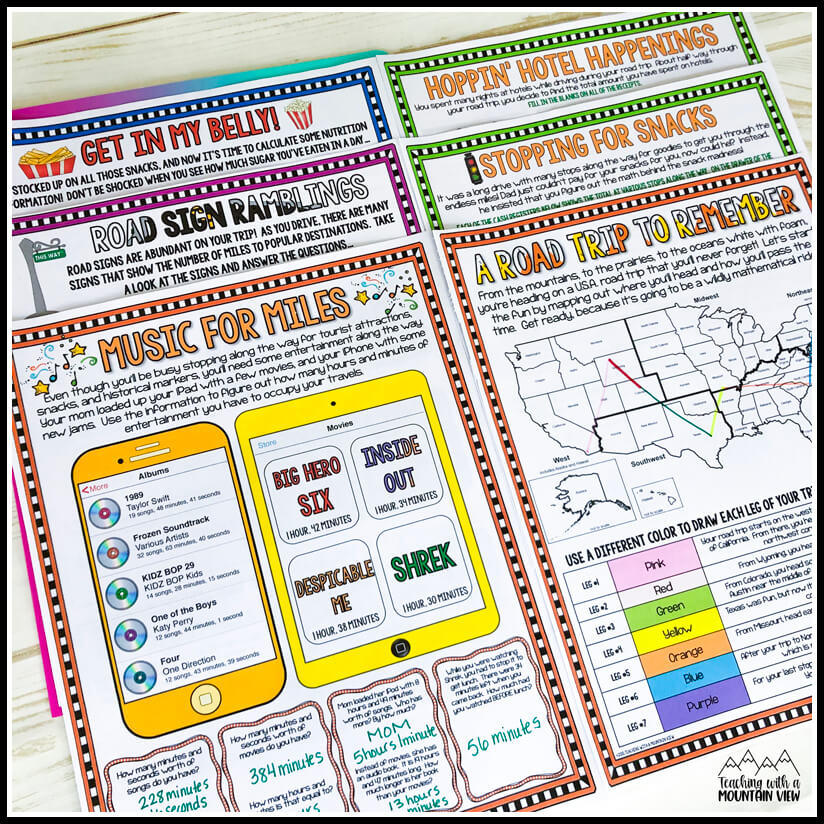
Place Value Detectives: This place value math project is BY far my most-loved math project! Turn your students into crime-fighting detectives while reinforcing place value skills . These are five different crimes to solve and four of the activities have two different options to make differentiating within the same project a snap. If you’re teaching place value, this post is full of more place value ideas .
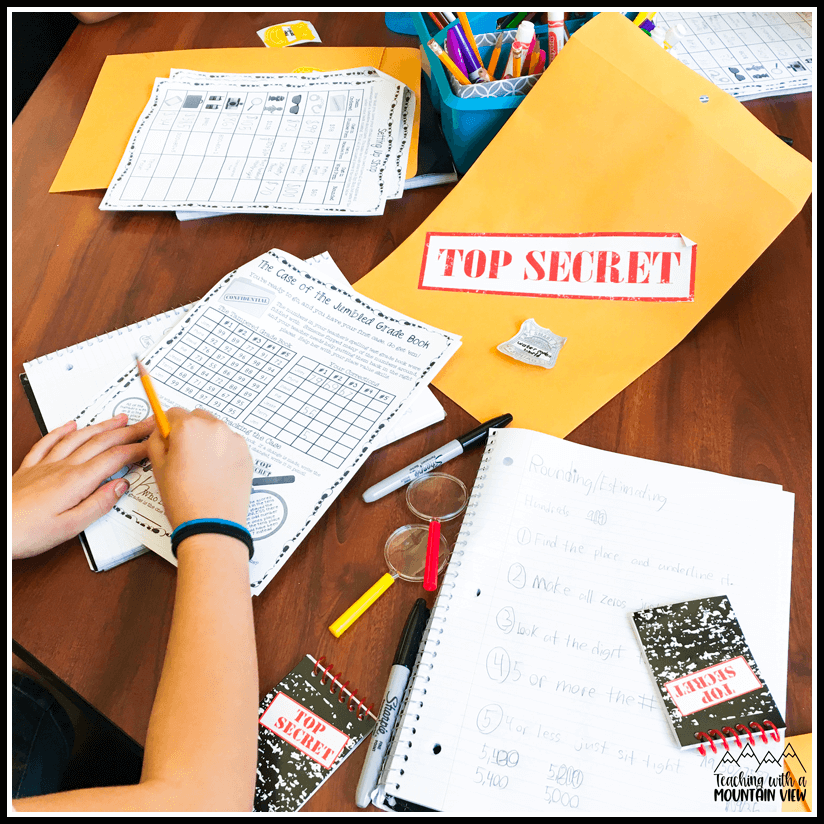
Long Division Movie Marathon: Extend and enrich division skills with this math project while students explore the ins and outs of designing and running their own movie theatre. There are actually two math projects in here, one advanced (two-digit divisors) and one standard (one-digit divisors) so you can use it across multiple levels! See this post for more long division ideas .
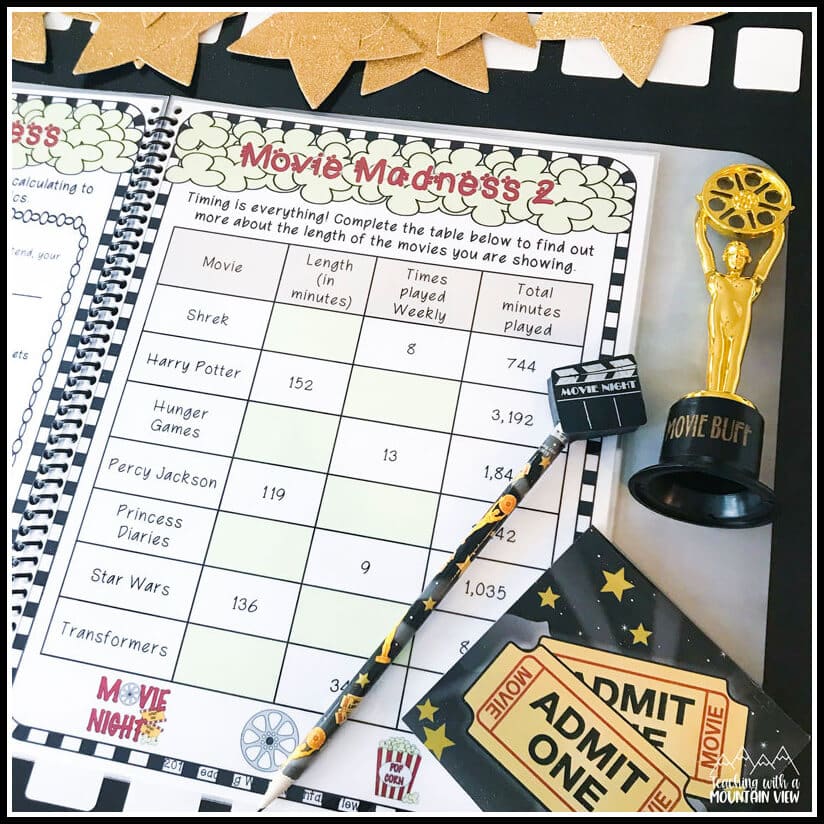
Decimal Place Value Sports Scramble: This one tops my list for most fun to create! Let your students be the judges with this decimal math project ! The biggest sporting championship of the year has just wrapped up and your students have stepped into the role of Scoring Official for the games! I also have this post full of more decimal ideas .
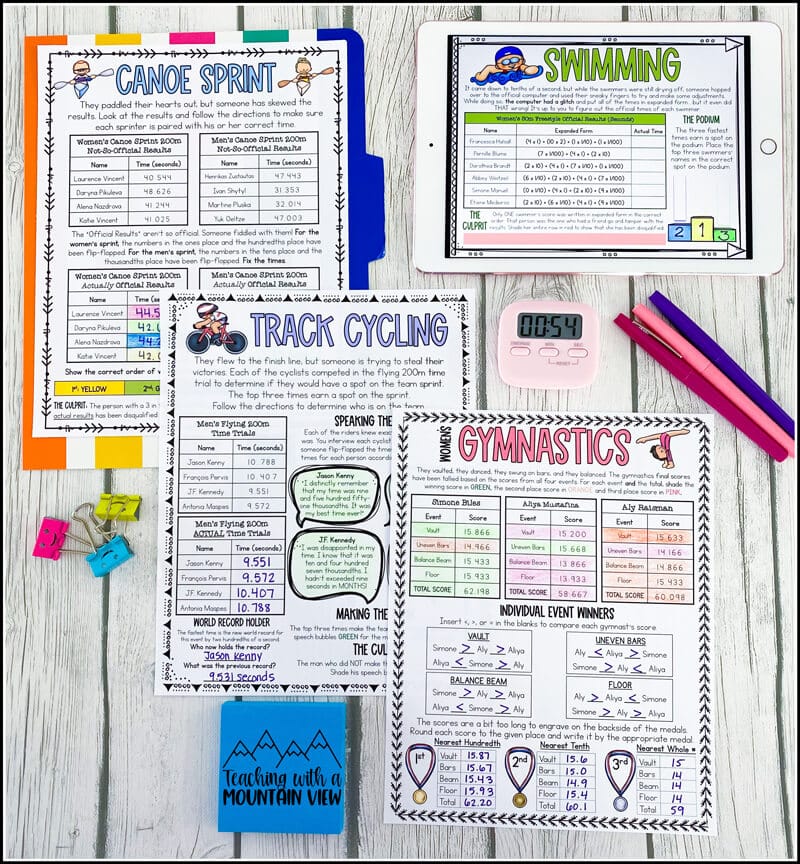
City of Shapes Perimeter and Area Math Project: Students will create and design buildings and other features in their imaginary city. From parks and recreation to housing and hospitals… it’s all up to them to design using their perimeter and area skills . You can get a closer look at this project and more perimeter and area ideas here .
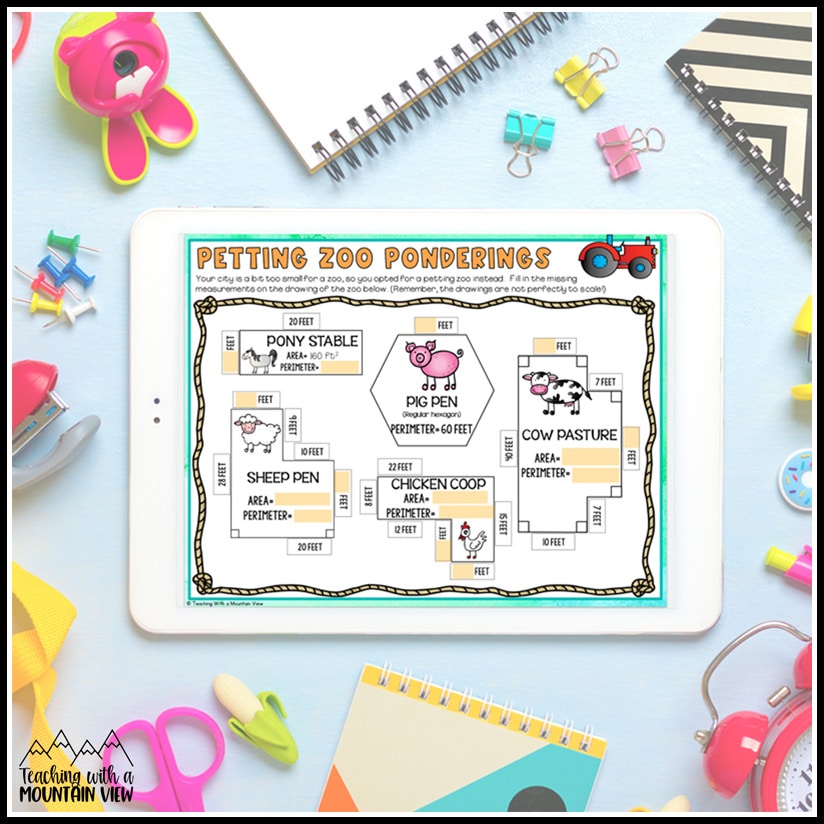
All Current Math Projects
- Concept Math Project Bundle
- Seasonal Math Project Bundle
- Addition and Subtraction Zoo Math Project
- Division Movie Math Project : TWO Differentiated Versions
- Fractions Bakery Math Project
- Place Value Detective Project
- Multiplication Resort Math Project
- Multiplying and Dividing Decimals Shopping Math Project
- Adding and Subtracting Decimals Shopping Math Project
- Graphing and Data Big Top Math Project
- Elapsed Time Detectives Math Project
- Drone Deliveries Coordinate Grid Math Project
- Perimeter and Area City Math Project
- Measurement and Geometry Theme Park Math Project
- Decimal Place Value Sports Project
- Road Trip Math Project
- Halloween Math Project
- Thanksgiving Dinner Math Project
- To Grandmother’s House We Go: Christmas Math Project
- The Winter Wonderland: A Winter Math Project
- Exploring Ireland: Addition and Subtraction Math Project
- The Sum of School: Cumulative Test Prep Project (TWO differentiated versions)
- End of the Year Party Planner Math Project
- For The Love Of Math: A Valentine’s Day Math Project
Reading Projects
If you’re interested in using projects in your literacy instruction too, I also have a reading projects bundle !
Mary Montero
I’m so glad you are here. I’m a current gifted and talented teacher in a small town in Colorado, and I’ve been in education since 2009. My passion (other than my family and cookies) is for making teachers’ lives easier and classrooms more engaging.
You might also like…

Leave a Reply Cancel reply
Your email address will not be published. Required fields are marked *
- Pingback: Practical Classroom Decor Tips - Teaching with a Mountain View
- Pingback: Math Workshop Ideas for Upper Elementary - Teaching with a Mountain View

©2023 Teaching With a Mountain View . All Rights Reserved | Designed by Ashley Hughes
Username or Email Address
Remember Me
Lost your password?
Review Cart
No products in the cart.
- 1st Grade Math
- 2nd Grade Math
- 3rd Grade Math
- 4th Grade Math
- 5th Grade Math
- 6th Grade Math
- 7th Grade Math
- 8th Grade Math
- Knowledge Base
- Math for kids
Some of the Most Exciting Math Projects Ideas for Students
Created: March 14, 2022
Last updated: March 25, 2024

At the end of the term, many teachers exhaust the remaining math concepts they would love to feed into the fragile brains of the kids in the classrooms. There, one tends to rely on re-teaching of lectures to kill time. Provide math projects for the kids instead of giving them extra homework.
Also, note that when children do the same kind of math projects, they can solve other algebraic problems in a fun way. The following is an exciting list of school project ideas for kids comprising 15 unique ideas to keep them entertained and help them practice math through play. The math project ideas take their child back to a new mode of learning that is very different from the kind of topics for school projects method they already seem accustomed to.
15 Attractive Math Project Ideas
Mathematics is not about understanding certain things but knowing how to employ them during calculations of routine everyday activities requiring this type of thinking. Math activities like measuring length and volume and counting weight and size have been listed below for better comprehension of these principles.
In one way or another, there should be an activity for your children, whether a math project for kindergarten or primary school. The aim is to teach them to interpret many events or things in their environment that will enable them to interpret numbers. These fifteen children’s mathematics project ideas for school will help your kid enjoy their learning. Here are the examples of such projects:
At the same time, it helps to know that in their game, adults also do something like playing bingo rather than simply being destructive. This is like bingo, only that it also captures your kids’ attention. This game allows you to select which specific Math skill you need your children to have. Your kids will love this math game in no time. You can use Math Bingo as a teaching tool for any given skill, such as addition, subtraction, division, multiplication, or addition.
Before playing:
- Write down twenty arithmetic questions, for instance, 8 + 5, 2 + 1, and 5 + 9.
- Write your answer and ensure it is done on the same page.
- Use a web generator or make your 5×5 bingo cards.
- Put the solutions from your list on the cards randomly and write the answers.
Each pupil must have their bingo card. You can also choose to laminate the cards for later use. Students can put coins or pebbles next to the correct response in such cases. Such fun project ideas activity may be significant as one of the vital math project ideas for children.
Paper Plate Clock
After making the paper plate into a clock, a small hole should be carved in the center of it. The students must put numbers 1- 12 into the corresponding spaces provided. They can cut the appropriate-sized clock hands on colored paper and fasten them with a split pin.
With this math project, you can teach your kids correct time-telling. Alternatively, you can let children write on another plate with different colors and glue it to the underside of the top plate to form an edge. You ensure that the kids can catch up fast since it is entertaining.
Assess the Height or Weight of the Objects
Guessing games are a favorite among children. For example, they can find that an object that appears long may be short. You may estimate heights or weights instead of estimating both if you prefer. It does not matter whatever option you choose, but it should be that your kids know how size and length differ.
Take several different objects and put them on one table. Request learners to come up with the guesswork of every mass or height of an item per time and document them in one column on a sheet of paper. Call out each student separately and obtain precise observations that should be entered in the second column. Another idea is to have an additional column next to each object and then pass the sheet around the room so that students can estimate how heavy or long each object is.
Math for Kids
Math Hopscotch
Outdoor work with middle school mathematics projects will be an excellent idea for sunny days in good weather conditions. Mark hopscotch in the playground, sidewalk, or the school compound to look like a calculator setup. Form the kids into a queue and present one of them with an elementary school project ideas task such as “1+8”, “3+7,” and so forth. Students are expected to jump off every item on the equation as they should go down the line, ending up with the correct answer.
In any other math assignment, you can yell out various numbers and instruct youngsters to leap on any equation that equals that quantity. You could ask children to hop on one foot for even and extraordinary numbers. These math undertaking ideas are an excellent way to train kids in fundamental calculations, even when spending time outside.
Pizza Slices and Fractions
For a few children, fractions can be hard to understand. Engagement in math tasks like pizza slices can greatly assist kids in visualizing fraction thoughts. Make a list of instructions with five excellent fractions. Students should make a pizza out of production paper or the interior of an empty pizza container and label each fraction on pizza slices.
Then, write different fractions on paper and place them into a container. After a kid discovers a fraction, they must color the corresponding component in the pizza creation. This math project can help you take a look at a kid’s knowledge of fractions.
Scavenger Hunt
You can use scavenger hunts as math initiatives for middle school children. To do that, divide the kids into groups and offer each of them with measuring tools like a ruler, tape, and so on. After the division, instruct the kids to search for items of precisely equal length.
For younger students who no longer have basic size information, you may draw several strains on paper and inspire kids to find the same length of things. You may execute these math project ideas both outdoors or within the classroom. Ensure that you prepare materials ahead of time and place them in a stable and accessible region.
Graph and Survey Projects
When you want to engage in middle-class mathematics tasks using graphs and surveys, ask each student to ask you a question that they would like to question their friends on. For example, the children might ask their peers to choose the coloration they select among black, green, yellow, and white.
Allow students time to wander the classroom, quizzing every other and accumulating data. Let the kids collect facts and create a bar chart of the usage of constructing blocks or Lego to signify their findings. They can make labels for each bar with the use of sticky notes.
Venn Diagrams and Sets
7th-grade fun math projects like Venn diagrams and sets are fascinating yet puzzling if the kids do not understand them. Since both ideas overlap substantially, you need to take a while to explain and construct a stable basis for the youngsters. Start by explaining that Venn diagrams constitute sets (indicated with circles).
After that, have the youngsters construct a Venn diagram using cardboard and colored paper. The cardboard might be the history, and the youngsters will carve the colored paper into circles to represent the sets. Each youngster must consequently identify a particular number among units by shading the circles. At the end of the task, the class should have cardboard cutouts displaying the intersection of units, union of units, and distinction of sets.
Mathematical Records About the “Me” Mission
The “Me” assignment is standard college teachers’ most popular math project idea. Students carry out basic mathematics tasks to proportion fun and fascinating details about themselves and their families with their classmates. However, you should not restrict this concept to math projects for middle school.
Students will generally recollect fundamentals they discovered in preceding grades, like addition and subtraction, and use them within the “Me” tasks. Teachers can also discover more about students’ families and mathematical backgrounds with these interesting math topics.
Organizing a Get-Collectively Project
If you have ever been part of a group organizing parties, you are adequately privy to the time and effort to rent things, get decorations, and prepare meals. To cover those math tasks necessities for 6th-grade mathematics, strive to have the youngsters pretend to be event planners and have them place orders for all the meals they may be serving. Alternatively, you can settle for take-outs.
While executing the project, you can use menus from a nearby restaurant or search online for pricing records. Students can quickly multiply costs while ordering similar things for several individuals. Then, they can use addition and subtraction operations, to sum up the whole bill’s quantity and subtract it from their typical budget. Finally, they will divide the invoice with an accomplice to co-plan the party. Such math projects for kids may be a tremendous method to evaluate the inexperienced persons’ grasp of all four decimal operations.
Comparing and Contrasting Temperatures Projects
Comparison of integers and rational numbers will not be a project if your children can perform the subsequent tasks. Each pupil investigates a listing of cities, states, or areas for these math tasks and compares the lowest and maximum temperatures recorded in the locations. Evaluating and contrasting temperatures can help the children show their comprehension of absolute values and ability to compare integers.
After completing the look, the youngsters may also list towns with the lowest to the highest temperature. To amplify the scope of the primary project concept, you may also ask students to look at the difference between the recorded excessive and occasional temperatures for every town via absolute values.
Pixel Artwork Project
You can engage students in math artwork and creative math activities like pixel art. You need to get a few grid papers and ask kids to create pixel art for the classroom as an amusing project idea. The students then take a fresh piece of paper and write a new wide variety in every grid. Pupils additionally design a key to go together with the grid.
In most cases, you could evaluate students’ capability to supply and successfully shade a photograph created with the aid of every other student. For example, the children must color the integers red and other numbers yellow. Afterward, they could change with a classmate to test whether they can thoroughly pick out the concealed photograph by following the critical thing furnished for coloring.
Inequality Project
Inequalities are significant in the real world, and students can draw connections. You need to reveal some state of affairs through a presentation, photo, or concealment and pick out one. This project’s primary aim is to ensure the visual representation of the inequality corresponds to the textual disparities.
Some examples of projects for students of those inequalities encompass copies of the maximum height for elevators, the peak limits for amusement park rides, and the most potential for a selected parking zone. If your students are gifted in fixing inequalities, project them to design a task that necessitates the inequality solution earlier than graphing the outcomes.
Riddles, Puzzles, and Mind-Teasers
You can do math tasks for 4th-grade children that lead them to spend the day working on fascinating and challenging arithmetic riddles and brain teasers. Start printing and displaying the responsibilities around the classroom and corridors. Then, have the children move from one phase to another and notice what number of stages they skip.
Tree of Numbers
One of the most fundamental notions in mathematics is the range of numbers. To build the necessary math foundations, kids must draw close, one-of-a-kind types of numbers (fractions, decimals, natural numbers, high factors, and many others.) The Tree of Numbers is a math project involving activities with glue, toothpicks, scissors, crayons, colored and brown production paper, and neutral paper.
The youngsters will cut and construct a 2D tree with the assistance of construction paper. Then, they’ll draw octagons on the colored papers, cut them out, and fasten them at the tree. Next, they’ll write a specific quantity on the pinnacle and break it down into prime factors, using toothpicks to link the high numbers. Finally, they may write down the same old shape of the high factors at the tree’s base, forming the lowest branches.
Check out the Printable Math Worksheets!
Collaborative Projects
Using team-based math projects to enhance learning.
Traditional problem-solving can also be enhanced by engaging students in “team based math projects.” Working individually or in teams, students explore several linked mathematical problems. The experience engages as each solved problem yields a clue towards finally getting out. Not only does it reinforce mathematical concepts, but it also fosters teamwork, critical thinking, and flexibility. Overcoming challenges teaches students how essential teamwork is, which is beneficial not only for mathematics but also in other parts of learning.
Implementing case studies in group activities affords learners a feel of mathematics. Mixing necessary skills from various team players mimics the behavior pattern in a workplace where people with diversified competencies participate in solving complex issues. Apart from improving their understanding of mathematics, it also prepares them for working together, which is required in STEM and other career fields.
Promoting Peer Collaboration and Problem-Solving
Students can engage in reciprocal teaching situations, taking turns being teacher and learner. Students explain a mathematical concept to their peers, solidifying their knowledge while exposing them to other problem-solving techniques. Through this mutual transaction, students build a sense of communality in class and develop essential interpersonal speaking competencies for successful teamwork. Students share ideas and strategies as they learn about various ways to solve math problems.
Peer collaboration is also promoted through math olympiads– a sequence of exciting competitions that are meant to be complicated. During this process, students get into friendly rivalry whereby they try to answer complex issues before a specified duration elapses. Collaboration creates team spirit, which helps members learn from one another. Under these experiences, students improve mathematically through developing resiliency and working together, which will serve them well in tackling academic and work-related challenges.
Technology Integration
Mathematical exploration using digital tools.
Worth mentioning is that by incorporating digital devices such as drawing tablets for kids and online software applications in their learning process, students dive deep into novel spheres of mathematical research. Interactive simulations and software allow students to view complex maths in action. They may also use GeoGebra or Desmos to play around with certain graphs, understand mathematical relationships between the elements that constitute a geometry project idea, and discover various dynamic connections. This gives students an understanding of theories on mathematics and makes it clear to them what mathematics is about.
Using virtual manipulatives is another technique one could apply to integrate the technology within mathematics teaching. Students can build their algebra tiles or move around them among different shapes in a 3D virtual world. This digital resource will help improve their spatial logic reasoning abilities. These tools are immersive. Unlike many other education technologies, they alter the learning process and make it fun for the technology-oriented generation of students.
Some Coding Projects with Their Mathematics Bases
Including coding mathematics project for kids into the mathematics curriculum bridges the gap between theory and practice. For instance, students can learn and apply algorithms to programming systems such as Scratch, Python, or MATLAB. Students can design mathematics simulations different data visualizations, and solve more complex problems in a structured manner through coding.
Algorithmic thinking forms part of coding exercises and mathematical problem-solving. Computing skills allow students to translate their understanding of mathematical logic into an executable code. However, it enables them to acquire knowledge of coding and understanding of math. Coding projects spark creative thinking in students as they utilize math’s beauty through graphics and online interactives.
Competition-Based Projects
Participation in math competitions.
Such mathematical competition enables students to demonstrate that they can solve mathematics-related problems beyond ordinary classroom learning experiences. As a case in point, children are presented with different challenges, including the math Olympiad event and other local math contests meant to stimulate problem-solving and imagination during such occasions. Such events typically include various parts of maths, prompting the students to leave their lessons’ subjects and try some other domains inside maths.
In addition, math competition creates a collaborative environment for entrants. This helps them learn to collaborate to solve problems, share ideas, and compete on a larger scale. This, in turn, develops a love of math in them. Moreover, they create a passion for math in addition to school work.
The importance of nurturing a competitive attitude in math
Competition in math creates certain positive opportunities for the education and personality development of students. It stimulates a desire among people to strive towards perfection. Through peer competition, learners refine their skills of resolving problems, undertake a deeper study of mathematics, and attain creative skills.
Resistance also emerges through competition. Flexibility in quickly taking care of problematic matters, even those unrelated to mathematics, requires mental nimbleness and adaptability. Students acquire self-confidence to view problems as part of growth instead of barriers while facing problem-solving exercises.
Moreover, a student involved in a math competition will learn to set higher goals for himself. Excellence motivates them to develop discipline and dedication to be perfect since they are pursuing perfectionist behavior. This rivalry has also helped students build toughness for difficult times at the university level and during their careers as active and ambitious individuals who can succeed even with less-developed mathematical skills.
Personalized Projects
Enabling students to choose projects depending on their interests .
Incorporating creative project ideas for school selected by students based on their interests makes the learning process more engaging and personalized. Curiosity and motivation are ignited by students’ freedom of choice when it comes to project selection, which is inspired by areas that they really consider fascinating. This entails that one may for instance look into the mathematics of tessellation, as an art lover or sports fan delves into game outcome statistics and probabilities.
First, this process is significant for students as much as it makes math meaningful since it facilitates their internalization and ownership of the process. It enables them to develop strong and longstanding conceptions about mathematics on things they consider interesting.
Constructing Customized Learning Styles in Projects
In general, effective math teaching addresses individual learning styles critical in education. Such individual assignments could satisfy various learning styles, such as visual, aural, kinesthetic, or any combination. Such learners might cherish projects based on charts and diagrams as a way of understanding things through vision. Auditory learners may benefit from projects with discussion and explanation, while kinesthetic learners could use hands-on activities and interactive simulations.
Individual funny project ideas make math more accessible while adapting diverse learning styles into work and addressing different ways students absorb information while working, thus, individual projects. This adaptable method provides the necessary conditions for learners to develop full potential and obtain better results in mathematics.
Showcase and Recognition
They are providing students with an opportunity to present their projects.
A critical part of facilitating a student culture of appreciation and sharing includes setting up a stage for students to exhibit their math tasks.y A hosting a project showcase within the school community and via the virtual platforms allows students to share with others how they conducted research on their projects, discovered things, and how these discoveries relate to the actual world. They can learn how to communicate well, which in turn gives them a sense of pride as they report on their respective mathematics.
Student learning is another aspect promoted by a project presentation platform. In addition, they are sources of answers, they present different points of view, and they understand various approaches to solving mathematical problems. Such interactive showcases help create an atmosphere for collective learning in mathematics; that is, students encourage each other.
This Entails Celebrations for Successes While Recognizing Input
It is also vital to recognize and celebrate students’ accomplishments when doing mathematics projects. This makes them want to work more towards achieving greater accomplishments. On the other hand, recognition encompasses outstanding students and learning as part of the improvement process. Acknowledgment can be done through certificates, awards, or mentioning it during the school assembly.
Recognition of effort in a math project goes beyond grade or score. To sum up, it encourages a favorable approach towards achieving desirable outcomes and acknowledges persistence as an asset when looking for solutions. This creates an atmosphere of students who appreciate their endeavors and uniqueness; they feel successful, which gives birth to their intrinsic motivation regarding possibilities in math.
Teacher’s Role
Facilitating the learning process.
Teachers will only create a conducive learning environment by involving themselves in math projects. The teachers should do more than just deliver knowledge to their charges; they must be guides showing the way forward in the path of inquiry and discovery. This is where project concepts, expectations, and frames of inquiry are created to provide a foundation for what comes next. It also increases learner autonomy and enables their independent thinking.
Besides this, the teacher could also help scaffold the learning process by guiding the learners. Such exercises rely on the preceding texts that foster students’ curiosity and enable them to make their research questions explicit. Thus, the way teachers create an involved teaching environment wherein children chat with mathematics and use it in life.
Projects Help in Advising and Giving Assistance
Teachers are more of a guide in math projects, though they offer full-time aid and direction. These experts help the students define a problem they must solve based on their academic objectives and the purpose of each project they have set. That way, teachers can record learners’ performances and provide necessary feedback where needed.
Firstly, the role of a teacher is a resource center that students connect to important ones. In turn, teachers develop a friendly atmosphere whereby the children can freely raise issues or seek assistance at any moment.
Apart from ensuring the successful accomplishment of projects, this guidance helps develop problem-solving skills and resilience.
Math can be a tough challenge for youngsters and adults. So, engaging youngsters in math projects can help ease the mastering technique and is especially critical when you need students to keep in mind math standards. Learning the math school project ideas for kids the youngsters love will open your mind to the most exemplary and suitable projects for you and your students.
Jessica is a a seasoned math tutor with over a decade of experience in the field. With a BSc and Master’s degree in Mathematics, she enjoys nurturing math geniuses, regardless of their age, grade, and skills. Apart from tutoring, Jessica blogs at Brighterly. She also has experience in child psychology, homeschooling and curriculum consultation for schools and EdTech websites.
After-School Math Program

- Boost Math Skills After School!
- Join our Math Program, Ideal for Students in Grades 1-8!
Kid’s grade
After-School Math Program Boost Your Child's Math Abilities! Ideal for 1st-8th Graders, Perfectly Synced with School Curriculum!
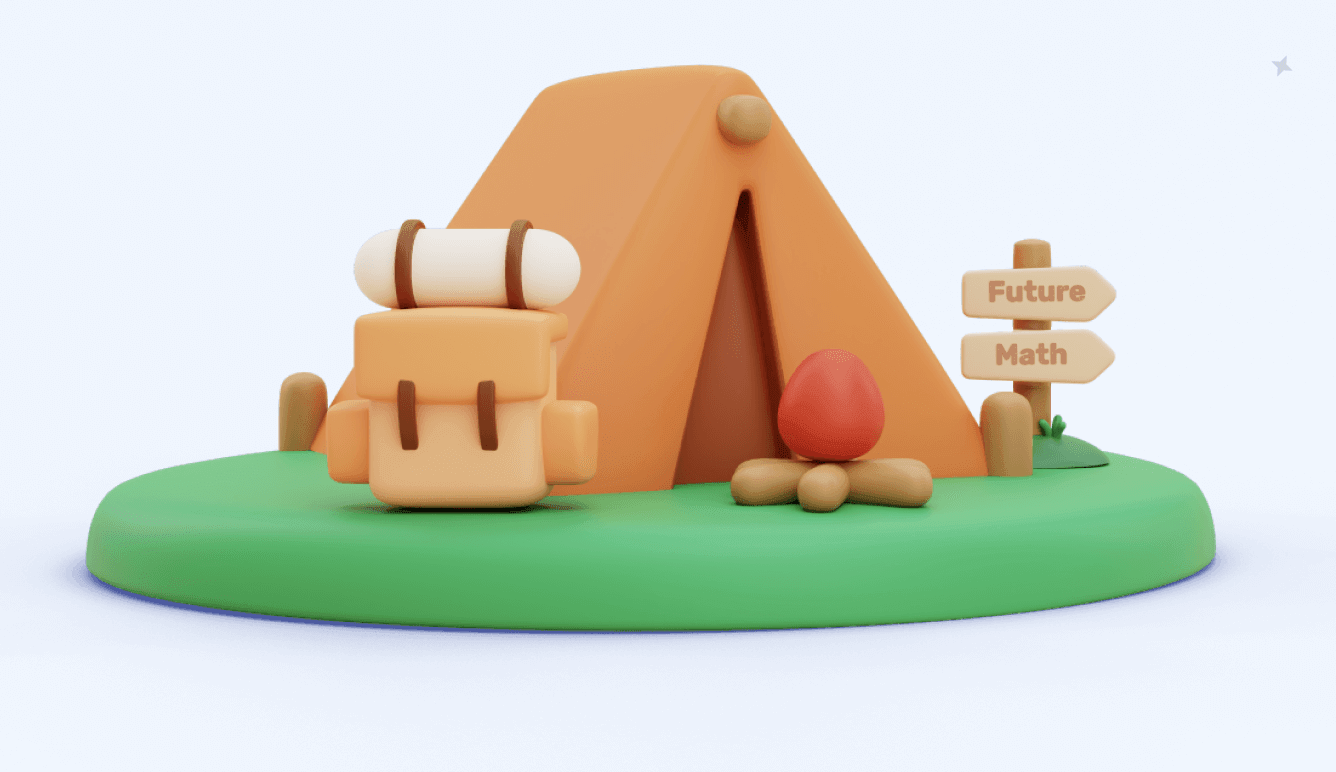

Related posts

April 29, 2022
How to Teach Division – A Simple Step by Step Guide
Division is fourth among the first four basic math operations that a child should learn. These math operations include adding, subtracting, multiplying, and dividing. They form the basis of all math problems. Children do not necessarily need to know the first three operations to understand division, although, as we will see, they are crucial. Teaching […]

April 5, 2022
Common Core Math and Its Difference from Traditional Math
Math requires you to dig deeper into the understanding of why problems exist. And in that process, you find multiple solutions to the problems. After decades of solving math problems a certain way, teachers now use a new and improved method to teach math to kids. Although some parents may find this common core math […]

March 14, 2022
Project Ideas for Mathematics
Grocery Shopping— In preparation, students should talk to their families about what they are planning for food for the week. How do they decide what to buy? Provide students with a budget and grocery ads. You might give them a list of items they would already have on hand, such as salt or mayonnaise. Have them work in teams to plan menus and what to shop for the week. Have recipe books available in the room. What will they buy? Are they within the budget? Can they make their meals with what they bought? How do the meals stack up nutritionally? (Those with online access can access sources such as PeaPod for a more complete listing of items.) Suitable for grades 3 and up. The younger children might think about only lunches or dinners.
Grocery Receipt Detectives— Go to a nearby grocery store and look for a discarded, long receipt. Organize the items on the receipt into categories and develop a graph. Study the categories and write a short story about the family that purchased those grocery items.
Stock Market Game— Take an imaginary $100,000 and invest in various stocks. Watch and graph the value of your portfolio over time.
Fantasy Sports— Choose a celebrity sports figure. Gather data about this person from the Internet. Defend why they are among the best in their sport.
Design a Playground— Draw a proportionally scaled playground. Include as many different geometric shapes as possible. Do the math for space and cost.
A Map of the School— Draw a proportionally accurate map of the school in its surrounding area. Figure walking distances to various points within the neighborhood.
Measurement Olympics— Plan and execute active events that involve measurement such as: cotton ball throw, standing broad jump, vertical height leap or how many lima beans can you hold in one hand. Have students create other events. Keep track of scores for participants in the events and figure the differences between winners and others.
How Much Can the Room Hold?— How many Kleenex boxes would fill your classroom? The multipurpose room? Your school? Your bedroom? Use estimation, reasoning, measurement and problem solving to determine the answer.
Where Is Math?— In their school or neighborhood, students could take photographs with digital cameras (or draw pictures) to show different places where math could be found. Students could create a display board/poster and write a brief description, caption or question to elicit discussion on the math they found in the picture.
Million Dollar Project— ”Give” students a million dollars to spend on a single project. For example, if they bought a house, they could use the newspaper to find a house and create a budget for housing and utilities. If they bought a business, they would need to supply all of the materials for the business.
Million Dollar Project 2— Create an ideal playground. Find space on the school grounds and use spatial area concepts to create a playground. Students present their ideas/blueprints to the group.
String Art— Students use poster board or tag board to design geometric shapes/patterns using colored string. Patterns can be found in art curriculum or fabrics from varied cultures. Discuss the patterns. The finished designs can be displayed on a school wall or donated to a local children’s hospital or other public building.
Create a Game— Students will create a math game—the pieces, questions, packaging, rules, game board, advertisements for the game, etc. When presenting the game, students explain the game and “sell” it. Ask them to identify what math is involved in the game. Invite students to play the game. Donate the games to the school.
Math Author— Students write a math book that features a math concept and then illustrate the book. They research other types of math books, from the school or local libraries to create their own math “literature” book. Once completed, students present their books to each other and donate them to the school library or local hospital.
Share a Treat— Using a school kitchen (or whatever is available), have students bake and decorate a cake or make cookies. Students could then deliver the cake to a nursing home or senior citizen home in the area. This project involves measurement and following directions. In the absence of a kitchen, identify other treats that could be prepared without an oven or stovetop that could be prepared and shared.
Flat Stanley— Have students send Stanley to different parts of the community and beyond. Students will track Stanley’s travels on a map and calculate the miles traveled. The presentation would be a schoolwide bulletin board that is maintained by the students. If “Flat Stanley” is already being done by a class at school, do a similar project using a stuffed animal, which the after-school group can name.
Walk-It— If the school has a walking track or enough space in the building (such as in the gym) students can choose a destination and “walk there.” For example, they can walk from their school to Washington, D.C. They plot their journey, discuss mileage and geographical locations, plan the number of minutes to walk each day, estimate the total days for the trip, revise their estimation, etc. Once everyone has arrived in Washington, D.C., have a celebratory event, such as a luncheon at the White House. At the event, they present their chartings of the trip and compare their walking journey to other modes of transportation. They can also talk about what they “passed” along the way.
What if Math Disappeared?— Ask students to think about what their day would be like if they didn’t have math. Students can talk about how the world would change if math did not exist. They can investigate careers and try to prove that math is not needed in the careers. Invite guests in to talk about their careers and how math is, in reality, used each day. Students will keep a journal of how they do use math each day.
Shopping— For clothing, furnishing a house or apartment, gifts, school supplies, carpeting, paint or physical education equipment. How much do things really cost? What can you get for a budget? How much can you save through use of coupons or discounts? Can you save enough to make a difference by shopping at one store instead of another?
Plan a Celebration— (party, wedding, prom, picnic) Estimate how many will be there, food to be served with cost, decorations with cost. Organize, menu, schedule for attending to tasks, create budget, be ready to present for approval to the faculty (if school function) or other audience that will be picking up the tab.
Nutritious but Delicious School Meals— Plan lunch menus for the school to serve that would satisfy students’ tastes and follow rules of good nutrition. These menus can then be presented to the district’s food service staff.
Math in Schools— With a partner or small group-compile as many instances of math in the school as you can. The possibilities are as broad as students’ imaginations. (Examples: different shapes, statistics of student population and staff, areas/perimeters of spaces, cost of eating lunch each week, grading scales, average heights of students in different grades, steps and other distance measures from door to classroom, volume of rooms, etc.) Organize and create displays of information suitable for an exhibit.
Puzzles Project— After completing a number of different math-related puzzles, have students create their own and compile them into a booklet for all class members. Examples: word find, magic square, word arithmetic, word scramble with math vocabulary, rebus, riddles, secret message. (This idea from Hands-On Math Projects with Real-Life Applications by Judith Muschla and Gary Robert Muschla. Josey-Bass.)
Math Projects : 20 Simple and Interesting Ideas
Table of Contents
23 January 2021
Reading Time: 7 minutes
Mathematics is not about understanding different things and concepts; it is about getting used to them by applying the concepts in everyday tasks.
What could be a better way to learn these applications other than interesting maths projects which facilitate both creativity and knowledge.
These projects on mathematics give an understanding of how mathematics works. Mathematics is in and around you everywhere in the form of numbers, shapes, sizes, volume, weight, etc.
Our task is to figure out and identify these numerous situations and things around us to play with numbers and concepts.
- Fun Math activities for Class 3
Math projects
Here is a downloadable PDF that consists of Math projects for Grades 6-10. Click on the download button to explore them. Understanding and grasping the ideas of mathematics in a better way.
These maths projects help in developing very important mathematical skills like:-
Correlating the concepts taught in the classes with the practical applications of those concepts
Proving a hand on experience to the children
Fostering teamwork, coordination, and communication along with creativity and knowledge
Understanding and grasping the ideas of mathematics in a better way
Visualizing the concepts in the form of diagrams, graphs, and images facilitates a better understanding
Improving their problem-solving skills, reasoning, and planning skills, etc.
Making real-life decisions that leads to a holistic approach to learning.
In this article, we have brought for you 20 topics for maths projects which will help you develop simple maths projects.
Maths project ideas for Class 6
Some of the ideas for simple maths projects for class 6 are:
Number System Tree
The number system is one of the most basic concepts in mathematics. It is very important to understand the different types of numbers (order and even numbers, fractions and decimals, natural numbers, whole numbers, positive and negative numbers, etc.) and the different properties of numbers. A project for the same will help the student understand and correlate the relations between different types of numbers.
Shapes and Figures
Shapes, figures, and sizes are a very important concept of geometry. A student must understand the different properties of different geometrical figures. It starts from class 6 but has various applications in higher-level education. Therefore it is very important to have a proper foundation that is only possible through a project on the same.
Practical examples of different chapters
From class six onwards, students start getting exposed to different topics that have a number of practical applications like percentages, profit, and loss, interest, etc. Students can be asked to make their own problem statements by practicing creative problems with respect to the same chapters. This will help them to correlate the concepts with the practical world.
History of maths and different topics
It is very important to understand the history or the background of a subject or a topic before starting to learn more about it. But, because of the curriculum norms, this very important aspect is skipped from the school syllabus. Projects can be a great way to help students do research about it. This will facilitate better knowledge and understanding.
Conversions
There can be a project work that is specifically dedicated to conversions of different things like fractions to decimals or vice versa, negative to positive or vice versa, etc. These are very simple concepts but students often tend to make mistakes because of a lack of clear understanding. Good, detailed project work will help them develop a base.
Ideas for Maths Project for Class 7
Some of the ideas for the projects on mathematics for class 7 are:
Practical Applications of different chapters
As stated above, maths is a practical subject and it is very important to understand the concepts. The best way to do this will be to allow students to undergo practical examples related to different chapters and come up with creative problem statements, ideas, and solutions. For example, the student can find out the average amount spent on the purchase of different items, or he/she can find out the profit or the loss of the shopkeeper, etc.
Formula lists
Making a formula list will be a great project work because it will not only help the student in the short run but also facilitate his/her learning before the exams and in the case of higher education. This will serve both as a research and as a document of reference.
Puzzles and brain teasers projects
Puzzles and brain teasers are a very dynamic way of inculcating knowledge, fostering creativity, and facilitating practical viewpoints. This helps a student to think and come up with answers along with reasons to support it. It helps them in a better decision making process.
Algebraic expressions
Students are exposed to a new field of mathematics in class 7 which is algebra. Good project work can help a student to develop a strong base in understanding different algebraic equations and expressions. This project work can include a number of numerical, interesting problem statements, and mental math calculations.
Sets and Venn diagrams
This is a very interesting concept but can be a confusing one if not understood properly because the concepts are somewhat overlapping with each other. There are very minute differences in this particular topic. Detailed project work can actually help a student clear all their doubts and develop a strong base for higher education.
Topics for Maths Project for Class 8
Some of the ideas for interesting maths projects for class 8 are:
Construction in Geometry
A very important part of geometry is to learn constructions of different shapes and figures of different types. Learning and building the basics of construction in geometry is very important to understand various higher-level educational studies like physics and architecture.
This project work is actually never-ending. Students don't learn all the concepts in a single standard. They continue learning various different concepts in different chapters that have different practical applications. Slowly, the level of difficulty keeps on increasing. Therefore it is very important to stay updated and improvise the skills through project works which allow us to correlate the concepts of the chapters with practical examples.
Mensuration of figures
For the first time in class VIII, a student gets exposed to the chapter on menstruation. This chapter facilitates measurements of different things. It may include length, perimeter, area, etc. There are a number of concepts and a number of formulas that are related to this particular topic. Therefore giving good project work that helps students to understand these concepts by applying the given formulas and correlating them with the practical ships will foster growth and development in knowledge.
Mirror symmetry and Reflection
Symmetry and reflection are one of the easiest concepts of mathematics. This could be a very fun and interesting project for a student wherein he will understand the difference between symmetrical and asymmetrical figures and will also develop a base for higher-level education.
Making practical models for different topics
Project works can be done in two ways - (1) As mentioned above, using pen and paper by drawing various diagrams and graphs; (2) Making practical models explain different concepts. These practical models help a student to develop the power of visualization and foster teamwork and creativity. This will be a little difficult because it will require the culmination of different ideas from other subjects also. But, if done successfully, this can be a great learning experience.
Maths project ideas for Class 9-10
Some of the ideas for maths projects for class 9-10 are:
Heights and Distances
A student gets exposed to the concept of trigonometry for the first time in class 9-10. This concept is very widely used to understand heights and distances which plays a very important role in practical life. This also develops a base for various higher-level studies. Students can be asked to draw diagrams and graphs and correlate the concepts with the same to develop a better understanding.
Statistics and graphs
It is in class 9 that a very new dimension of mathematics opens up for the students which are known as statistics. A very important part of statistics is graphical representations that have their application in almost every sphere of knowledge. Therefore, it becomes very important to understand the basics of these concepts and good project work on this topic will definitely foster good learning.
Making and understanding 3D figures
There are various 3-D figures which a student must understand, like cubes and cuboid being the basics. The calculations for these 3-D figures are not as easy as the 2-D figures. Therefore, good project work will facilitate the visualization of 3-D figures and also help students to understand the various formulas and calculations related to it.
Similarity and Congruency
Another very important concept of geometry that pops up in class 9-10 is the similarity and congruency of triangles. Students often face a lot of difficulty in understanding these concepts. Therefore, a project work that has a good amount of research work with a number of assignments and questions to solve will definitely help a student to learn the concept of similarity incongruency.
Mensuration and Volume
The concepts of mensuration take a whole new level in class 9-10. It brings in new concepts like surface area, volume, etc., and also brings in new figures like a cylinder, circle, cone, etc. It is equally important to understand these concepts and shapes also. Good project work will definitely foster a good knowledge of these concepts.
These were some of the most interesting lists of maths project topics that we have curated for you through this article. We hope this article was useful and will help the readers to choose some of the most interesting topics out there to learn, grow and develop. These topics are proven to be the most beneficial for students. Choose from the best, the ones which suit you the best.
About Cuemath
Cuemath, a student-friendly mathematics and coding platform, conducts regular Online Classes for academics and skill-development, and their Mental Math App, on both iOS and Android , is a one-stop solution for kids to develop multiple skills. Understand the Cuemath Fee structure and sign up for a free trial.
Frequently Asked Questions (FAQs)
What are the mathematical tools which are essential in building projects.
- Chart Paper (For creating shapes etc.)
- Set Squares
What are different types of graphs which can be used to describe data?
- Bar Graph - For Discrete Numerical Data
- Pie Chart - For Percentage Data
- Histograms - For Continuous Numerical Data
- Line Chart - For Discrete Numerical Data (used for showing the comparison between the values)
What are different examples of Symmetrical shapes?
- Equilateral Triangle
- Cardioid (Heart Shape)
- Letter 'A'
- Letter 'U'
Mathematics Assessment Project
Assessing 21 st century math, welcome to the mathematics assessment project, materials from the math assessment project.
The Mathematics Assessment Project is part of the Math Design Collaborative initiated by the Bill & Melinda Gates Foundation. The project set out to design and develop well-engineered tools for formative and summative assessment that expose students’ mathematical knowledge and reasoning, helping teachers guide them towards improvement and monitor progress. The tools are relevant to any curriculum that seeks to deepen students' understanding of mathematical concepts and develop their ability to apply that knowledge to non-routine problems.
More about the Math Assessment Project
Formative Assessment Lessons: Classroom Challenges
100 lessons for formative assessment, some focused on developing math concepts, others on solving non-routine problems. A Brief Guide for teachers and administrators (PDF) is recommended reading before using these lessons for the first time.
Summative Assessment Tasks
A set of 94 exemplar summative assessment tasks to illustrate the range of performance goals required by CCSSM. The tasks come with scoring rubrics and examples of scored student work.
Prototype Tests
Complete summative test forms and rubrics designed to help teachers and students monitor their progress using a range of task types similar to the 'Tasks' section.
Professional Development Modules
5 Prototype modules that encourage groups of teachers to explore the practical and pedagogical concepts behind the materials, such as formative assessment, collaborative learning and the use of unstructured problems.
The TRU Math Tools Suite
The Teaching for Robust Understanding of Mathematics (TRU Math) suite is a set of tools with applications in Professional Development and research based around a framework for characterizing powerful learning environments.
State, district and CCSSI standards appear courtesy of their respective authors. All other material Copyright © 2007-2015 Mathematics Assessment Resource Service, University of Nottingham.
![The Shell Center for Mathematical Education [Shell Center Logo]](https://map.mathshell.org/img/shell_white.png)
Watch the Webinar: Implementing Successful PBL + STEM Initiatives WATCH NOW!
- Annual SmartLab Conference
- Resource Center
- ESSER Funding
- ESSER Funding Webinar
- Customer Sign In
- Customer Support
- Visit a Lab

- Share on Facebook
- Share on Twitter
- Share on LinkedIn
Innovative Approaches: Bringing Math to Life Through Project-Based Learning
If you’re a K–12 educator, you’re likely familiar with the ways in which project-based learning (PBL) can enhance content that is uninteresting or challenging for students by sharing it in a more engaging way. Unlike the traditional “stand and deliver” lesson format — in which the teacher lectures and students listen — PBL is designed to connect students to concepts and skills through authentic, hands-on experiences. By bringing PBL into math, students are able to go beyond textbooks and formulas and solidify their understanding of mathematical principles and concepts with real-life applications of skills.
In this blog post, we’ll explore the essence of project-based learning in math and provide practical tips for creating impactful PBL math projects.
What Is Project-Based Learning?
Project-based learning, as defined by President of PBL Global Thom Markham, Ph.D., is a method that seamlessly integrates 21st century skills — such as communication and teamwork — into core academic subjects. This approach provides a tangible connection between academic concepts and their practical applications.
Project-based learning activities start with a question, encourage thoughtful inquiry and self-reflection, and allow students to collaborate to problem solve. Another way to describe this approach is “learning by doing.” The one commonality between all PBL engagements is that they have a clear connection to real-world scenarios or challenges.
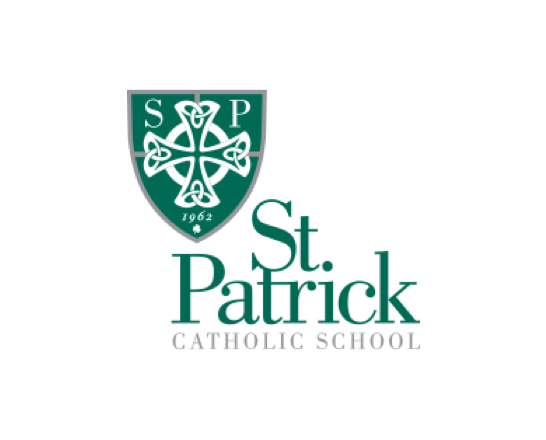
“I used to struggle to get students engaged in analyzing the ‘standard’ spreadsheets I provided in my math lessons. Now, with the SmartLab, students design an experiment, collect unique data in Excel, analyze the data in class, and publish the results. Students are so much more motivated to analyze data grounded in their unique experiments. I have also noticed that their thinking is deeper, their questions are better, and the collaboration causes a depth of rigor not seen in my class previously.”
Why Use Project-Based Learning in Math?
In the context of mathematics, PBL involves students working in teams or small groups to design and execute projects with real-life applications that illustrate mathematical principles.
PBL doesn’t just help students who feel challenged by math — even some of the strongest math students struggle with the practical application of math skills. Project-based math engagements can bring critical relevance to math concepts, challenging students to solve real problems authentically while preparing them to navigate standardized tests and problem solve in the real world. No matter their academic strengths or interests, learning to creatively solve problems is critical for students’ success in their future personal and professional lives.
Using PBL in K–12 mathematics instruction enables learners to:
- Make abstract concepts concrete
- Experience productive struggle and practice perseverance
- Use reasoning to solve problems
- Practice creativity, self-expression, and innovation
- Develop a deeper understanding of math principles in real-world applications
- Construct viable arguments and give/receive meaningful feedback
- Model their learning visually through presentations, graphs, diagrams, etc.
- Identify and use appropriate tools and technologies to solve problems
- Build critical thinking and problem-solving abilities
- Collaborate with their peers and practice communicating their ideas
- Iterate and redesign solutions to work toward efficiency
When students have the opportunity to use academic concepts to solve practical, real-world problems, they can feel as though what they are learning matters — which has a direct impact on their motivation, engagement, and learning retention. This can be especially helpful for students who dislike the subject or feel as though math just isn’t for them.
Using math in PBL also provides opportunities for differentiated learning by providing students with different access points, inspiring different ways to engage with course content, and allowing them the flexibility to choose the tools and resources that will best help them solve problems (all of which are applicable to life beyond school). Overall, this approach allows for more equitable access to learning.
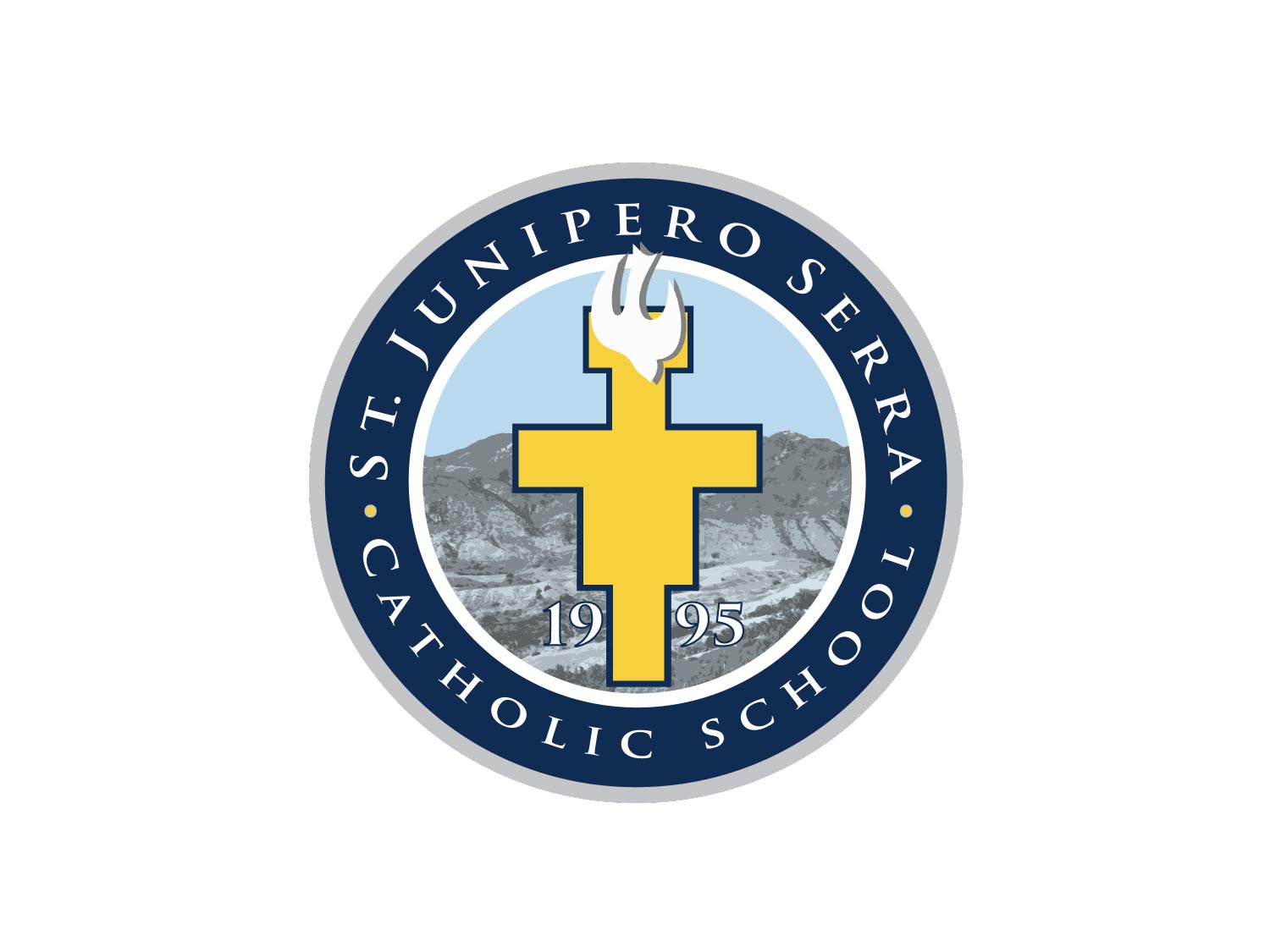
“We incorporate science, history, math, reading, and writing in the SmartLab HQ. The activities can be open ended allowing the students to come up with their own outcome, or they can be solved multiple ways allowing the students to learn from their classmates.”
Tips for Creating PBL Math Projects
Academic standards provide an ideal jumping-off point for any type of academic engagement. Coupled with clear learning objectives, teachers can develop and implement project-based lessons that guide students in achieving a specific goal while still leaving room for creativity and unique engagements with the course material.
When creating PBL activities for math units, keep the following tips in mind:
- Name the problem: Ask students to explain, in their own words, the particular challenge they’re trying to solve through their work. This ensures that everyone is on the same page and answers the eternal question: “Why do we have to know this?”
- Clarify the standard or learning objective: As the teacher or facilitator, you need to be sure the problem students identify is relevant to their learning goals as much as it is relevant to them personally. Effective lesson design always begins with a specific end in mind, even when the students are in the driver’s seat.
- Authenticity is paramount: Projects should be connected to students’ interests, current events, or their daily lives. Doing so will hold their attention and invite meaningful engagement with the course content.
- Chunk it up: Break units into manageable chunks to ensure your students can pace themselves, make mistakes, ask questions, and ultimately have a productive learning journey.
- Think ahead: Even the youngest students benefit from lessons that connect to real careers or future pursuits . Connecting abstract concepts to concrete outcomes also opens up cross-curricular opportunities, such as exploring how a marine biologist uses data collection and statistical analysis when studying invertebrate populations, or how race car drivers use speed and acceleration or gear ratios to improve their performance.
- Different is good: Design or select challenges for which there is no “right answer,” such as devising a budget for a lemonade stand. Math has the reputation of being restrictive, but when given the opportunity to use different approaches or produce different solutions, students can better understand math’s versatility.
- Pause and reflect: Make time for students to pause, review their steps, talk through challenges, iterate, revise, and reflect on what they’ve learned. This helps with learning retention and recall for future lessons.
- Share the results: Sharing their learning and giving and receiving feedback benefits both the students presenting and their peers. Seeing how others approached the problem and what conclusions they made is an invaluable learning experience that demonstrates the cognitive diversity present in every classroom.

“All the coding activities we did in the SmartLab HQ helped me in my math class. I like that there are different levels to choose from—I worked my way up to the intermediate level!”
Challenges of PBL in Math
As with any subject, teaching math through PBL presents unique challenges — but small adjustments can make a big impact on the overall student experience. Consider these three common challenges and their possible solutions.
- Demands of standardized tests often force teachers to cover content quickly in a traditional, lecture-based instruction model, limiting the opportunity for customization. Solution: Instead of “teaching to the test,” identify the ultimate learning objective and have students come up with their own problems to solve to get there. Alternatively, you can present students with a problem to solve using fundamental concepts, but allow them to choose the method of engagement — hands-on, with a partner, connecting it to a personal interest, exploring a new application, or a holistic combination.
- Math textbooks and lessons often follow a linear path of instruction without room for interpretation. Solution: Build in time for unstructured exploration upfront, during which students can test out procedures or tools, discover and make connections, identify questions, and otherwise play with the concepts being presented. Allow students space throughout the learning process to pause, explore, make observations, ask questions, and reflect, both independently and collaboratively.
- Even some of the strongest math students struggle with the practical application of math skills. Solution: Instead of ending with the solving of an equation, challenge students to solve a real-world problem using their math skills. Make it fun and interesting by connecting the problem to a real application or their personal interests. (This also works with students who are typically disengaged from math.) Ask students to articulate the problem in their own words and identify the tools they’ll need to solve it, then challenge them to find efficiencies to improve the process. Bring it close to home by posing a problem that affects them directly — ask them, “How will finding a solution improve your life or the lives of others?”
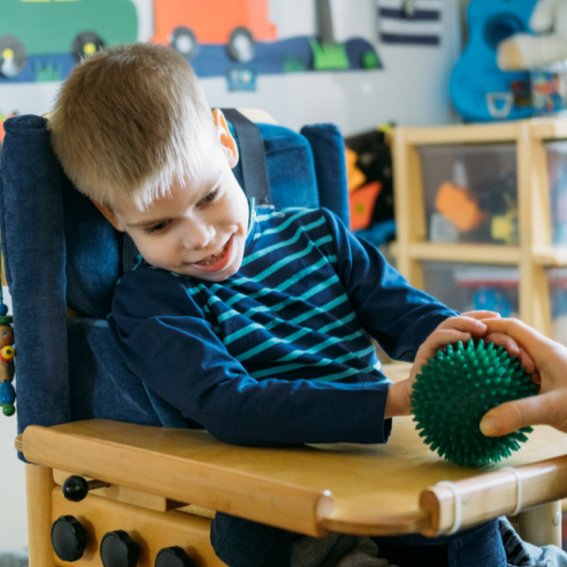
“Students prefer the SmartLab HQ over other classes. The lab is so multisensory, hands-on, and experiential that students sometimes don’t even know they’re learning. They are building things and don’t realize they’re incorporating math or problem-solving skills.”
Examples of Project-Based Learning Math Projects
In a SmartLab , math is integrated with other core subjects in project-based activities called “project starters” to help students contextualize their learning. This integration aims to make concepts more approachable and fun and help students see the practical application and relevance of mathematical concepts in broader and more meaningful contexts.
Project starters also serve as a jumping off point where students can apply learned skills and knowledge in other applications/contexts. This jumpstarts their curiosity and opens opportunities for future skills application, which can foster career ideas or connections.
Take a look at these project starter examples with a math integration (you will need a SmartLab LearningHub account to view these):
- Pixie: Exploring Patterns (Elementary School): Students create original art through patterns and explore mathematical concepts such as symmetry, rotation, and reflection.
- Bridge Designer: Bridge on a Budget (Middle School): Students use the engineering design process to design and build a bridge, then apply mathematical concepts to determine cost and budget changes.
- Alternative Energy: Home Efficiency Exploration (High School): Students collect data on their own home energy usage, then analyze their data and propose changes to increase their energy efficiency.
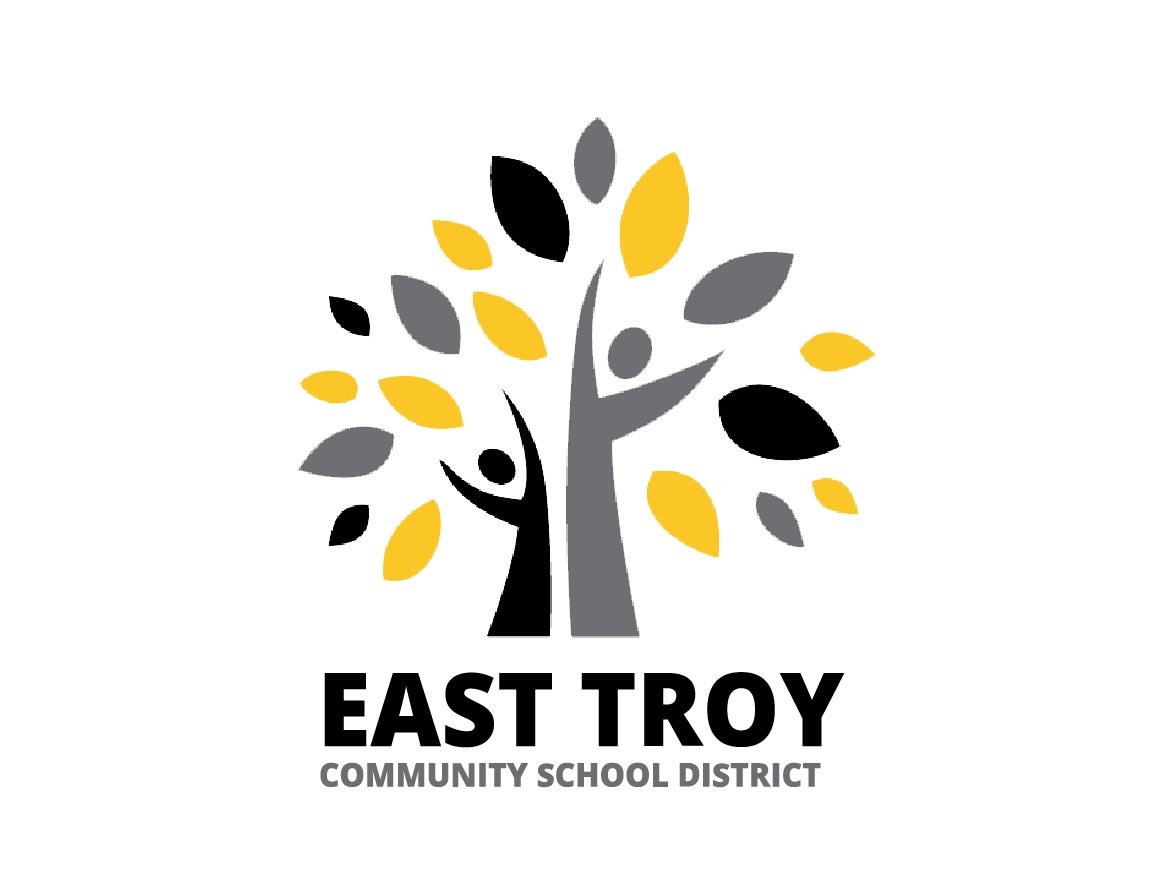
“The student experience in our SmartLab has positively transformed our school’s learning culture. Students become empowered and engaged as they apply content standards through the skills of critical thinking, curiosity, and collaboration.”
All of these projects integrate mathematical concepts in an authentic way that connects to students’ interests or lived experiences. In a SmartLab, math isn’t just fun — it’s meaningful!
Explore our STEAM + PBL programs for K–12 learners here .
Improving Math Scores at a Denver Elementary
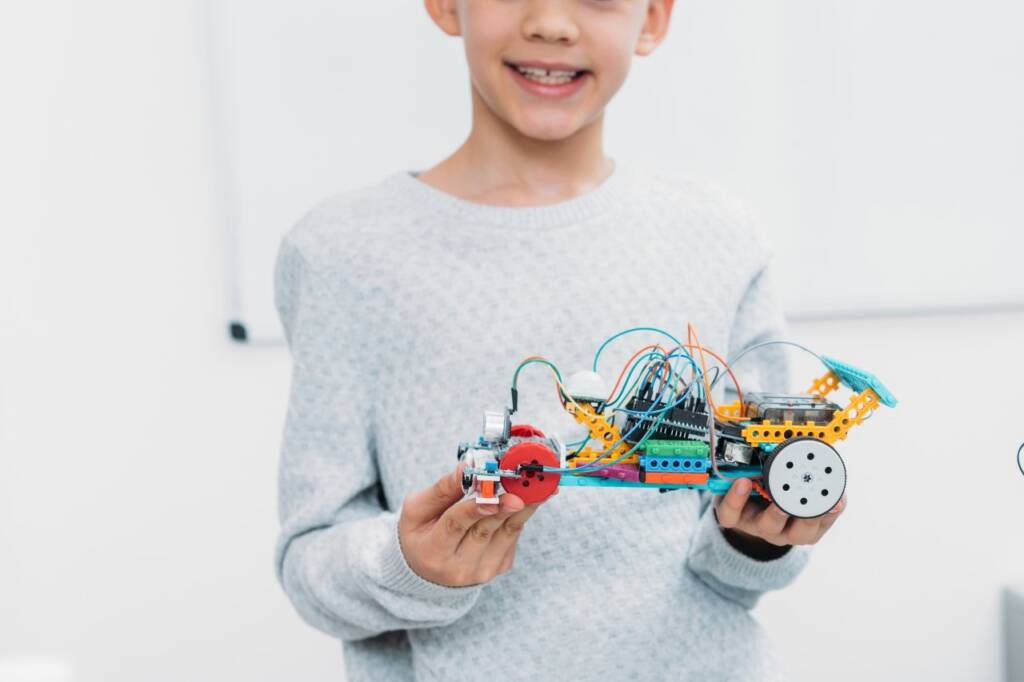
Find out how a SmartLab HQ helped grow standardized test scores.

Penelope Moody
Penelope Moody is the Curriculum Manager at Creative Learning Systems. She holds a Bachelor of Science in Speech, Language, and Hearing Science from the University of Colorado and a Master of Education from Regis University. Penelope joined CLS after 8 years of working as an elementary classroom teacher and dedicated elementary science teacher. She is passionate about the power of project-based learning to support the growth of a diverse group of learners. She is also dedicated to creating content that helps students develop a better understanding of the world around them and fosters personal skills that will serve them throughout life.
Going beyond STEM to teach essential skills

When the team at Jewell Houston Academy, a magnet school in Texas, looked for a STEM program, they wanted one that would not only engage students in STEM careers but could also teach conflict-resolution, problem-solving, collaboration, and communication skills.
Read about how the SmartLab HQ impacted both learners and enrollment.
Related Articles
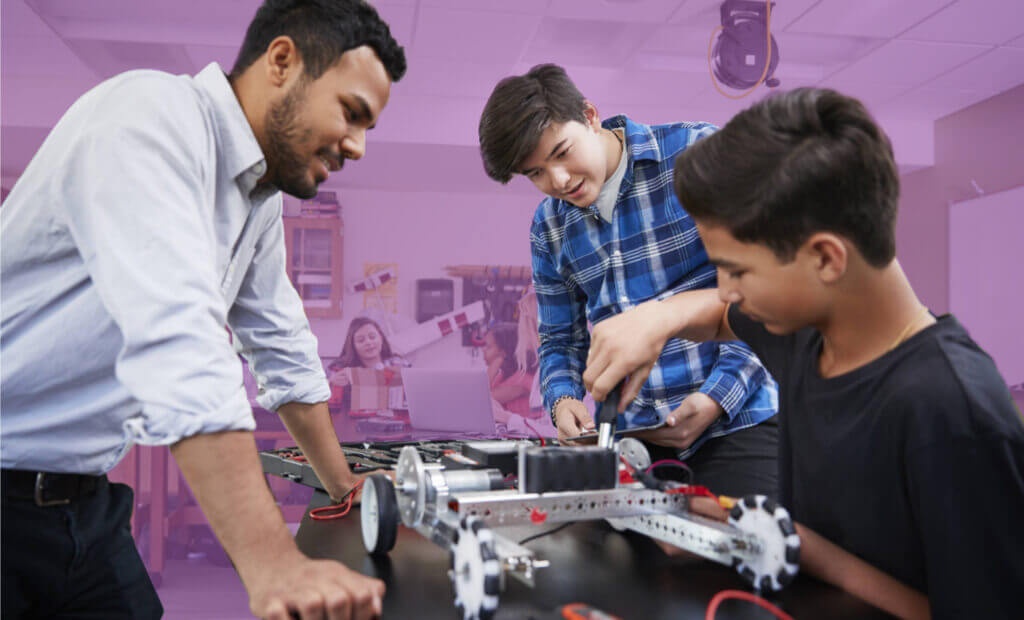
Your Guide To Personalized Learning: Examples, Benefits & More
Every student is different, with varying experiences, interests, and learning needs. That means standardized testing and set lesson…
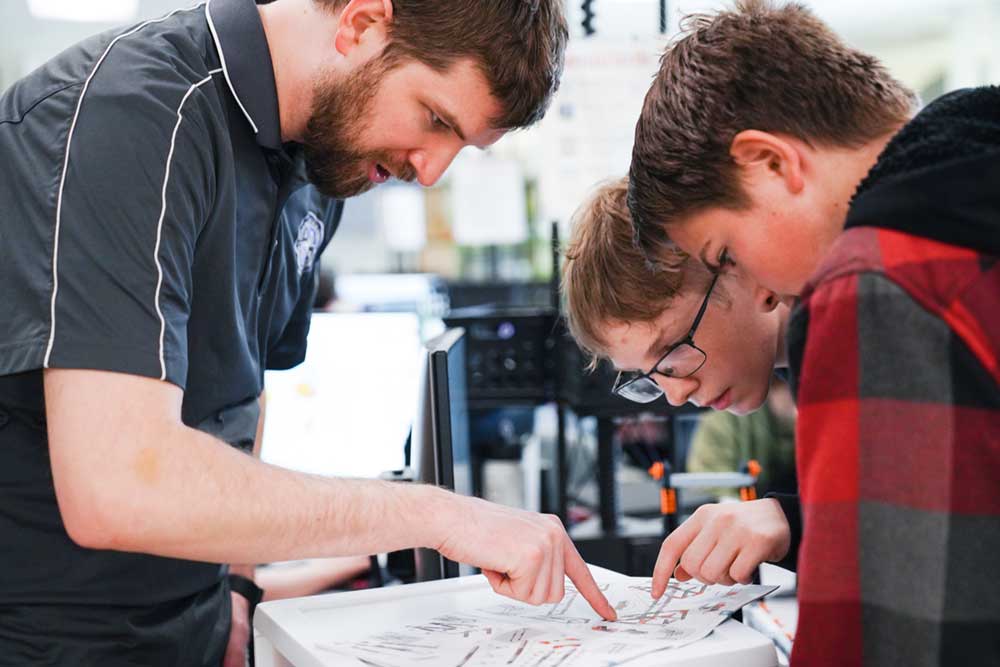
Project-Based Learning in High School
Introduction Project-Based Learning is a type of instruction where students work on long-term projects to learn about real-world concepts.…
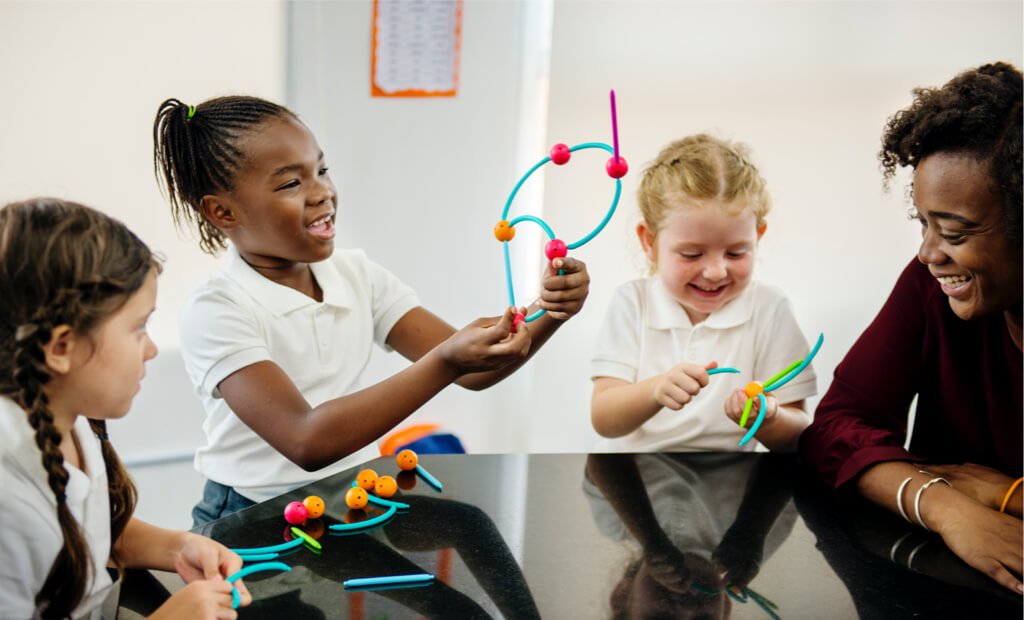
Project Based Learning in Primary School: Kindergarten Through 2nd Grade
Project Based Learning (PBL) has continued to gain attention in K-12 education for its ability to achieve two major goals: teach core…

25 Exciting Hands on Math Activities for Elementary
Engaging elementary students in hands on math activities is a fantastic way to foster a deeper understanding of mathematical concepts while making learning enjoyable.
These activities not only make math come alive but also encourage active participation and critical thinking.
By incorporating hands-on experiences, educators can create an enriching learning environment that sets a strong foundation for future mathematical success.
We will explore a variety of creative and effective hands on math activities for elementary students, ensuring that the learning process is both fun and educational.
Math Manipulative Creations: Building Geometric Shapes
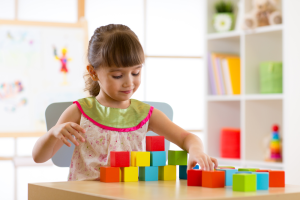
One exciting hands-on math activity for elementary students involves using math manipulatives like building blocks or interlocking cubes to create various geometric shapes. Start by introducing basic shapes like squares, rectangles, triangles, and circles. Then, challenge students to use the manipulatives to construct these shapes on their own. As they become more comfortable, encourage them to combine shapes to form more complex figures, such as making a hexagon from triangles or a parallelogram from rectangles. This activity not only reinforces shape recognition but also enhances spatial awareness and problem-solving skills.
Fraction Beach: Sandbox Exploration of Fractions
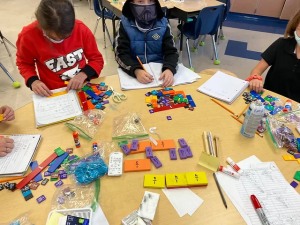
Create a tactile learning experience with a Fraction Beach activity. Fill a large sandbox with sand and divide it into sections representing different fractions. Students can use shovels, buckets, and other tools to manipulate the sand, creating visual representations of fractions. This hands-on approach offers a unique way for students to grasp the concept of fractions as parts of a whole.
Fraction Pizza Party: Understanding Fractions through Play
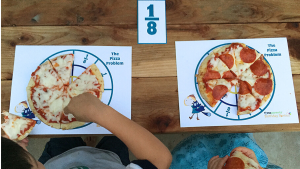
Fractions can be a challenging concept for elementary students to grasp, but a Fraction Pizza Party activity can make it more accessible and enjoyable. Provide students with circular paper cutouts resembling pizza slices. Ask them to divide the slice into different fractions, such as halves, thirds, and quarters, using markers or colored pencils. Then, they can decorate each slice to represent the fraction they’ve created. This hands-on approach allows students to visualize fractions and comprehend their relationship to a whole, transforming abstract ideas into tangible concepts. Related: 20 Creative Math Door Decoration Ideas
Shape Hunt Scavenger Hunt: Exploring Geometry in the Environment
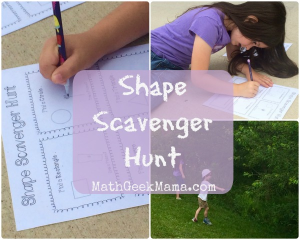
Take math learning beyond the classroom with a Shape Hunt Scavenger Hunt. This activity involves going outdoors or exploring different areas of the school to identify and categorize various shapes in the environment. Provide students with a list of shapes to find, such as squares, circles, rectangles, and triangles. They can document their discoveries by taking photos or drawing sketches of the objects they find. Not only does this activity reinforce shape recognition, but it also encourages students to see the relevance of math in their surroundings.
Money Math Market: Applying Real-life Math Skills
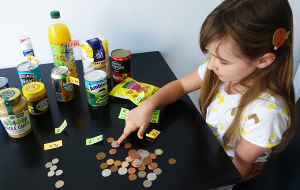
Teaching elementary students about money can be both practical and enjoyable through a Money Math Market activity. Set up a pretend market with various items labeled with price tags. Give students play money and have them shop for items, making calculations of their purchases and finding the total cost. This hands-on experience helps students understand the value of different coins and bills, as well as practice addition and subtraction in a real-world context. It also promotes financial literacy from an early age.
Measurement Olympics: Exploring Length, Weight, and Volume
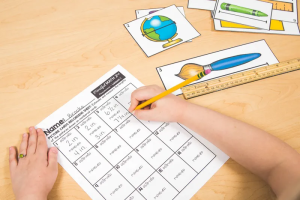
Host a Measurement Olympics to help elementary students grasp the concepts of length, weight, and volume in a playful way. Set up various stations where students can measure objects using rulers, scales, and measuring cups. They can compare the lengths of different items, weigh objects, and pour liquids into containers to understand volume. This activity not only enhances their measurement skills but also encourages them to apply mathematical reasoning to real-world scenarios.
Tangram Teasers: Puzzling with Shapes and Spatial Relationships
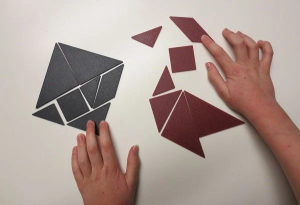
Tangrams are a fantastic tool to develop spatial reasoning and geometry skills in elementary students. Provide each student with a set of tangram pieces – seven flat shapes that can be combined to form various figures. Challenge students to recreate specific shapes, animals, or objects using the tangram pieces. This activity promotes critical thinking, problem-solving, and spatial visualization while engaging students in a creative puzzle-solving adventure.
Math Board Games: Learning Through Play
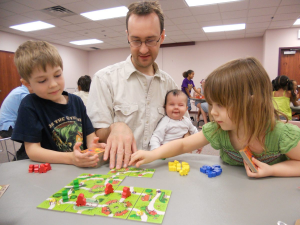
Engage elementary students in the world of board games that are designed to teach and reinforce mathematical concepts. Games like “Monopoly,” “Chutes and Ladders,” and “Uno” can be adapted to incorporate math challenges. Students roll dice, draw cards, or spin spinners, answering math questions or performing calculations as part of the game mechanics. This approach blends learning with leisure, making math more enjoyable and interactive. Related: 20 Helpful Grief Activities for Elementary Students
Pattern Play: Unveiling the Magic of Patterns
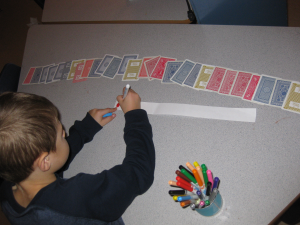
Patterns are everywhere, and the Pattern Play activity helps elementary students discover the magic behind them. Begin with simple patterns of colors, shapes, or numbers, and let students continue the sequence. Gradually increase the complexity of the patterns as they become more confident. This activity hones pattern recognition skills and lays the foundation for understanding more intricate mathematical concepts, such as algebraic patterns and sequences.
Geometry in Art: Creating Symmetrical Masterpieces
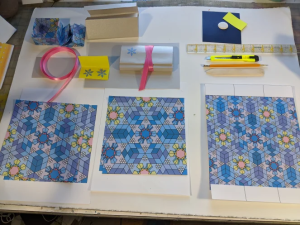
Merge math and art with the Geometry in Art activity, where students explore symmetry and geometric shapes to design their own masterpieces. Provide them with drawing materials and guide them to create symmetrical images by drawing on one side and reflecting the design on the other. This activity not only encourages creativity but also reinforces concepts like line symmetry and geometric transformations, showcasing the beautiful intersection of math and artistic expression.
Time Travel Adventure: Learning with Elapsed Time

Help elementary students grasp the concept of elapsed time through a Time Travel Adventure. Present them with scenarios involving different start and end times, and ask them to calculate the duration in hours and minutes. You can use real-life scenarios like planning a day’s activities or calculating travel times between destinations. This activity strengthens students’ time-telling skills and develops their understanding of time intervals.
Math Storytelling: Numbers and Narratives

Combine math and literacy with the Math Storytelling activity, where students create their own mathematical stories. Encourage them to invent characters, settings, and situations that involve mathematical concepts. They can use addition, subtraction, multiplication, or division to solve problems within their stories. Sharing their stories not only nurtures their creative skills but also reinforces their understanding of mathematical operations in a meaningful context.
Math Puzzles and Riddles: Brain-Teasing Challenges
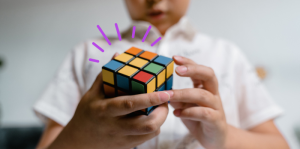
Engage elementary students’ critical thinking skills with Math Puzzles and Riddles. Provide them with age-appropriate puzzles that require logical reasoning and mathematical insights to solve. These puzzles can range from number sequences and logic puzzles to classic riddles with mathematical twists. The challenge of cracking these brain-teasers makes math enjoyable and encourages students to think outside the box.
Fractional Kitchen: Exploring Fractions in Cooking

Bringing fractions into the kitchen creates an interactive and delicious learning experience. Organize a Fractional Kitchen activity where students follow recipes and use measuring cups and spoons to prepare dishes. As they measure ingredients like flour, sugar, and liquids, they gain a tangible understanding of fractions in a practical context. This activity bridges the gap between abstract fractions and real-life applications.
Math Around the World: Exploring Cultural Numerical Systems
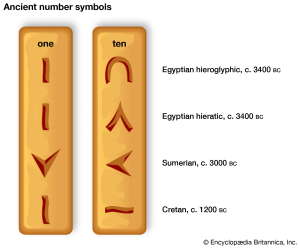
Expose elementary students to the diversity of numerical systems with the Math Around the World activity. Introduce them to various counting systems used in different cultures, such as Roman numerals or the Mayan number system. Allow them to explore these systems by representing numbers and performing basic calculations. This activity fosters cultural awareness while deepening students’ appreciation for the universality of mathematical principles.
Math Art Gallery: Graphing Coordinate Plane Creations
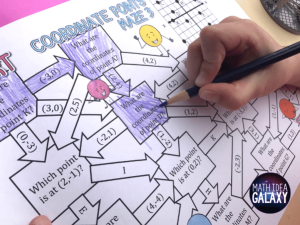
Transform the concept of graphing on a coordinate plane into an artistic endeavor with a Math Art Gallery activity. Provide students with a set of coordinates and guide them to plot points on graph paper. As they connect the dots, intricate designs and images will emerge. This activity allows students to explore the relationship between numbers, coordinates, and visual representations, enhancing their graphing skills in an engaging way.
Math Jeopardy: Interactive Review Game
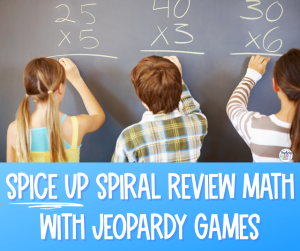
Elevate the excitement of reviewing math concepts by playing Math Jeopardy. Create a game board with different categories and point values related to the curriculum. Divide students into teams and take turns choosing questions from the board. Students must solve the presented problems within a specified time frame to earn points. Math Jeopardy not only reinforces learning but also promotes friendly competition and collaboration among students.
Math-Inspired Building: Exploring Geometry with Construction
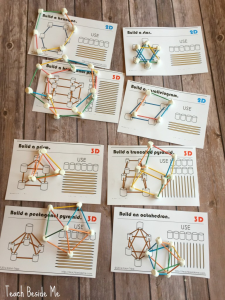
Combine engineering and mathematics with a Math-Inspired Building activity. Provide students with materials like toothpicks, marshmallows, or straws, and challenge them to create geometric shapes or structures using their imagination. This hands-on experience helps them understand concepts like angles, symmetry, and stability, all while fostering creativity and hands-on problem-solving skills.
Math Mysteries: Solving Interactive Math Whodunits
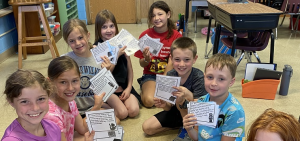
Engage elementary students in mathematical detective work with Math Mysteries. Present them with scenarios where they must solve mathematical clues to uncover the answers. These mysteries can involve a range of math topics, from solving equations to deciphering patterns. As students work through the clues, they not only sharpen their math skills but also enjoy the thrill of solving puzzles.
Math in Nature: Outdoor Exploration of Patterns and Shapes
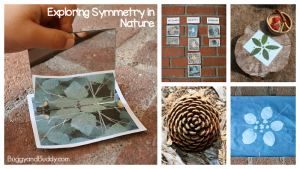
Nature is a treasure trove of mathematical inspiration. Take students on an outdoor exploration to discover Math in Nature. Observe patterns in leaves, petals, and seeds. Look for symmetry in butterfly wings or geometric shapes in rock formations. Encourage students to document their findings through sketches or photographs. This activity fosters a deeper connection between math and the world around us while encouraging curiosity and observation skills. Related: 100 Fun Questions Of The Day for Elementary Students
Recommended:
- 25 Teeth Brushing Activities for Preschoolers
- 24 Fun Literacy Activities for Preschoolers
- 23 Fun Shark Activities for Preschoolers
Sohaib Hasan Shah
Sohaib's journey includes 10+ years of teaching and counseling experience at BCSS School in elementary and middle schools, coupled with a BBA (Hons) with a minor in Educational Psychology from Curtin University (Australia) . In his free time, he cherishes quality moments with his family, reveling in the joys and challenges of parenthood. His three daughters have not only enriched his personal life but also deepened his understanding of the importance of effective education and communication, spurring him to make a meaningful impact in the world of education.
Leave a Comment Cancel reply
Save my name, email, and website in this browser for the next time I comment.
- Utility Menu
Guide to the ALM Capstone Project
Customstyles.
- Course Catalog
- MATH E-599 Teaching Projects Capstone Course: Past Capstones and Examples
- Sample Titles - Group 1
- Sample Titles - Group 2
- Sample Titles - Group 3
- Sample Titles - Group 4
- Sample Titles - Group 5
Instructor: Andrew Engelward, PhD
- Flipped Mathematics Classrooms
- An Inquiry into Inquiry-Based Learning in the Mathematics Classroom
- Math Anxiety
- Math Education in High School
- Mindset Matters in Mathematics: What Teachers can do About It
- Tracking in Mathematics
- Best Teaching Practices and Strategies for Gifted Math Students
- Embracing the 'Um' in 'Rehumanize': Identifying and Dismantling Implicit Power Structures to Rehumanize the Math Classroom
- Leveling the Playing Field
- The Use of Discourse in a Mathematics Classroom
Instructor: Carolyn Gardner-Thomas, PhD
- Cooperative Learning in Math
- Creating Effective Online Math Assessment: A Review of Assessments Creation and Implementation
- Implications of Time-Based Assessment in Math
- Social Justice in Mathematics
- Using History of Mathematics in Mathematics Education
- Blending Humor Ingredients to Math Classroom Cookbook
- Block Schedules and Remote Teaching of Math
- Engaging Students Use of discovery-Based Learning to Build Mathematical Skills, Confidence, and Problem-Solving Creativity
- Examining the Efficacy of Educational Strategies in Mathematics
- Improving Student Communication of Mathematical Understanding
- Including Math History to Support Student Engagement in Learning Math
- Mathematics Learning for Students with Chinese Educational Values in America, Problems and Potential Solutions
- Preparation of Special Education Teachers in Mathematics
- Reading Comprehension Strategies in the Secondary Mathematics Classroom
- Rigor in the Math Classroom
- Secondary Mathematics Education Reform: Providing Multiple Paths through Secondary Mathematics
- Strengths and Weaknesses of Oral Assessment in Math
- The Use of Lesson Openers to Engage Students in a Mathematics Classroom
- Using Calculators to Develop Critical Thinking Skills
- Virtual Math Classrooms Versus Traditional Math Classrooms
- Math Proficiency in the US: Serving our Underserved Students
- Postsecondary Developmental Mathematics Education
- Rewarding Students for Achievements in the Math Classroom
- The Science of Teaching: Instructional Design Implications of Cognitive Load Theory
- Homework for Math
- Serving Students with Disabilities in the Mathematics Classroom using a Co-Teach Model
- Why Not STEM? Small Fallacies Impacting Big Decisions
- About the Capstone
- Preparing for the Capstone

Math Intervention Strategies
- Feb 25, 2022
5 Research Based Math Instructional Strategies
Updated: Jul 17, 2023

Not only have I myself been a high school math intervention and Algebra 1 teacher at three Title 1 schools, but I’ve observed well over 1,000 secondary math classrooms in my work as a district math coach and my independent client work . And here’s the math instructional strategy I see most often:
20 minutes going over homework
20 minutes direct instruction with students writing notes
20 minutes of worksheet practice
This doesn’t work. Especially if you teach students who struggle with math or students with IEPs in math.
So what are the best math instructional strategies? What are the most effective research based math instructional strategies?
I believe the following five qualities are needed every single day in our middle school and high school math classrooms in order to effectively reach each and every student.

Quality #1 : Collaboration

Research : Promoting Student Collaboration in a Detracked, Heterogeneous Secondary Mathematics Classroom
Resource : Kagan Cooperative Learning
Our students need to collaborate to increase their math achievement, this is true especially of students who struggle with math. Check out the research article to learn more about WHY collaboration is vital, then check out the resource to find out HOW to get students ready for collaboration. All too often we math teachers assume students know how to work collaboratively, but (news flash) they don’t! They need to be explicitly taught how to collaborate and this book gives you great resources to establish that classroom culture.
Quality #2 : Real time formative feedback

Research : Teachers developing assessment for learning: impact on student achievement
Resource : Embedded Formative Assessment
This is one of the key instructional strategies for teaching math delivery. By formative feedback, I mean getting feedback from students that I use to adjust my instruction in real time to meet their needs as we go through the lesson the first time (and avoid having to re-teach and waste time later down the road when my students unit test scores tank). In his book, Embedded Formative Assessment, author Dylan William states, “Students with which the teachers used formative assessment techniques made almost twice as much progress over the year.” I don’t know about you, but that’s what my students need!
Quality #3 : Accountability

Research : Classroom Response Systems Facilitate Student Accountability, Readiness, and Learning
What I mean by accountability is, if you ask students to do a problem, what accountability is there for them to actually do it? If you just go over every problem, there is no accountability. If you just set them loose to work on their own pace, there is also no accountability. Without accountability our classroom results in blank stares during practice, no homework completion, and tests filled with “IDK.” The book resource linked here will give you practical tips to try in your classroom to increase student accountability.
Quality #4 : Cold calling

Resource : Teach Like a Champion
Of all the qualities listed here, cold calling is one of the most effective math instructional strategies. And yes, I mean cold calling like pulling popsicle sticks to get students to answer. In his book, Teach Like a Champion, author Doug Lemov says, “In order to make engaged participation the expectation, call on students regardless of whether they have raised their hands.” And while there has been some discord about the strategies in the book, I feel cold calling is single handedly responsible for my students' incredible math achievement. If you’re nervous about cold calling and think, “but my students have math anxiety! This sounds horrible!” I encourage you to check out this blog post about how to get started with cold calling the right way with students who struggle with math.
Quality #5 : Gradual release of responsibility

Research : Gradual Release Of Responsibility Instructional Model: Its Effects On Students' Mathematics Performance And Self-Efficacy
Resource : Better Learning Through Structured Teaching
Another hot topic in math education is inquiry based versus explicit instruction. Pretty even with cold calling is gradual release of responsibility as one of the best Math instructional strategies in my opinion. BUT (and I mean capital BUT) gradual release of responsibility (better known as I do, we do, you do) is often misused and taken to mean 20 minutes of I do, 20 minutes of we do, and then 20 minutes of you do. That doesn’t work! What does work is cycles of 1 I do, 1 we do, 1 you do problems throughout the period. You can learn more about my take on gradual release of responsibility in math over in this blog post .
Bringing them all together

Whether you’re in search of math teaching strategies high school or middle school math instructional strategies, if you teach students who struggle, I want you to know that you can make your math lessons engaging, collaborative, easy to plan, and enjoyable to teach… no matter what type of students you’re teaching!
You can take all of these research based math instructional strategies and piece together a system that works, or you can check out my FREE mini-workshop on the method I created that combines all five of these qualities to increase student engagement, collaboration, and achievement all while saving you massive amounts of planning time. It’s called the Math Wars™ Method and you can register for free by clicking here .
- math culture building
- engagement strategies
- math leadership
Recent Posts
Math Intervention
Low & No Cost Math PBL Resources
Disengaged students? Boosting Motivation in Math
251+ Math Research Topics [2024 Updated]
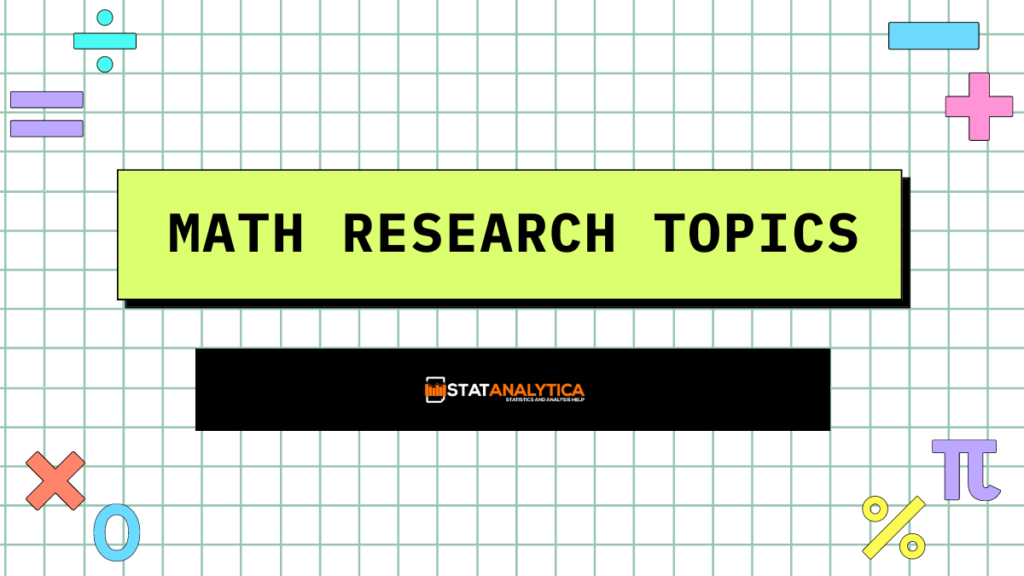
Mathematics, often dubbed as the language of the universe, holds immense significance in shaping our understanding of the world around us. It’s not just about crunching numbers or solving equations; it’s about unraveling mysteries, making predictions, and creating innovative solutions to complex problems. In this blog, we embark on a journey into the realm of math research topics, exploring various branches of mathematics and their real-world applications.
How Do You Write A Math Research Topic?
Writing a math research topic involves several steps to ensure clarity, relevance, and feasibility. Here’s a guide to help you craft a compelling math research topic:
- Identify Your Interests: Start by exploring areas of mathematics that interest you. Whether it’s pure mathematics, applied mathematics, or interdisciplinary topics, choose a field that aligns with your passion and expertise.
- Narrow Down Your Focus: Mathematics is a broad field, so it’s essential to narrow down your focus to a specific area or problem. Consider the scope of your research and choose a topic that is manageable within your resources and time frame.
- Review Existing Literature: Conduct a thorough literature review to understand the current state of research in your chosen area. Identify gaps, controversies, or unanswered questions that could form the basis of your research topic.
- Formulate a Research Question: Based on your exploration and literature review, formulate a clear and concise research question. Your research question should be specific, measurable, achievable, relevant, and time-bound (SMART).
- Consider Feasibility: Assess the feasibility of your research topic in terms of available resources, data availability, and research methodologies. Ensure that your topic is realistic and achievable within the constraints of your project.
- Consult with Experts: Seek feedback from mentors, advisors, or experts in the field to validate your research topic and refine your ideas. Their insights can help you identify potential challenges and opportunities for improvement.
- Refine and Iterate: Refine your research topic based on feedback and further reflection. Iterate on your ideas to ensure clarity, coherence, and relevance to the broader context of mathematics research.
- Craft a Title: Once you have finalized your research topic, craft a compelling title that succinctly summarizes the essence of your research. Your title should be descriptive, engaging, and reflective of the key themes of your study.
- Write a Research Proposal: Develop a comprehensive research proposal outlining the background, objectives, methodology, and expected outcomes of your research. Your research proposal should provide a clear roadmap for your study and justify the significance of your research topic.
By following these steps, you can effectively write a math research topic that is well-defined, relevant, and poised to make a meaningful contribution to the field of mathematics.
251+ Math Research Topics: Beginners To Advanced
- Prime Number Distribution in Arithmetic Progressions
- Diophantine Equations and their Solutions
- Applications of Modular Arithmetic in Cryptography
- The Riemann Hypothesis and its Implications
- Graph Theory: Exploring Connectivity and Coloring Problems
- Knot Theory: Unraveling the Mathematics of Knots and Links
- Fractal Geometry: Understanding Self-Similarity and Dimensionality
- Differential Equations: Modeling Physical Phenomena and Dynamical Systems
- Chaos Theory: Investigating Deterministic Chaos and Strange Attractors
- Combinatorial Optimization: Algorithms for Solving Optimization Problems
- Computational Complexity: Analyzing the Complexity of Algorithms
- Game Theory: Mathematical Models of Strategic Interactions
- Number Theory: Exploring Properties of Integers and Primes
- Algebraic Topology: Studying Topological Invariants and Homotopy Theory
- Analytic Number Theory: Investigating Properties of Prime Numbers
- Algebraic Geometry: Geometry Arising from Algebraic Equations
- Galois Theory: Understanding Field Extensions and Solvability of Equations
- Representation Theory: Studying Symmetry in Linear Spaces
- Harmonic Analysis: Analyzing Functions on Groups and Manifolds
- Mathematical Logic: Foundations of Mathematics and Formal Systems
- Set Theory: Exploring Infinite Sets and Cardinal Numbers
- Real Analysis: Rigorous Study of Real Numbers and Functions
- Complex Analysis: Analytic Functions and Complex Integration
- Measure Theory: Foundations of Lebesgue Integration and Probability
- Topological Groups: Investigating Topological Structures on Groups
- Lie Groups and Lie Algebras: Geometry of Continuous Symmetry
- Differential Geometry: Curvature and Topology of Smooth Manifolds
- Algebraic Combinatorics: Enumerative and Algebraic Aspects of Combinatorics
- Ramsey Theory: Investigating Structure in Large Discrete Structures
- Analytic Geometry: Studying Geometry Using Analytic Methods
- Hyperbolic Geometry: Non-Euclidean Geometry of Curved Spaces
- Nonlinear Dynamics: Chaos, Bifurcations, and Strange Attractors
- Homological Algebra: Studying Homology and Cohomology of Algebraic Structures
- Topological Vector Spaces: Vector Spaces with Topological Structure
- Representation Theory of Finite Groups: Decomposition of Group Representations
- Category Theory: Abstract Structures and Universal Properties
- Operator Theory: Spectral Theory and Functional Analysis of Operators
- Algebraic Number Theory: Study of Algebraic Structures in Number Fields
- Cryptanalysis: Breaking Cryptographic Systems Using Mathematical Methods
- Discrete Mathematics: Combinatorics, Graph Theory, and Number Theory
- Mathematical Biology: Modeling Biological Systems Using Mathematical Tools
- Population Dynamics: Mathematical Models of Population Growth and Interaction
- Epidemiology: Mathematical Modeling of Disease Spread and Control
- Mathematical Ecology: Dynamics of Ecological Systems and Food Webs
- Evolutionary Game Theory: Evolutionary Dynamics and Strategic Behavior
- Mathematical Neuroscience: Modeling Brain Dynamics and Neural Networks
- Mathematical Physics: Mathematical Models in Physical Sciences
- Quantum Mechanics: Foundations and Applications of Quantum Theory
- Statistical Mechanics: Statistical Methods in Physics and Thermodynamics
- Fluid Dynamics: Modeling Flow of Fluids Using Partial Differential Equations
- Mathematical Finance: Stochastic Models in Finance and Risk Management
- Option Pricing Models: Black-Scholes Model and Beyond
- Portfolio Optimization: Maximizing Returns and Minimizing Risk
- Stochastic Calculus: Calculus of Stochastic Processes and Itô Calculus
- Financial Time Series Analysis: Modeling and Forecasting Financial Data
- Operations Research: Optimization of Decision-Making Processes
- Linear Programming: Optimization Problems with Linear Constraints
- Integer Programming: Optimization Problems with Integer Solutions
- Network Flow Optimization: Modeling and Solving Flow Network Problems
- Combinatorial Game Theory: Analysis of Games with Perfect Information
- Algorithmic Game Theory: Computational Aspects of Game-Theoretic Problems
- Fair Division: Methods for Fairly Allocating Resources Among Parties
- Auction Theory: Modeling Auction Mechanisms and Bidding Strategies
- Voting Theory: Mathematical Models of Voting Systems and Social Choice
- Social Network Analysis: Mathematical Analysis of Social Networks
- Algorithm Analysis: Complexity Analysis of Algorithms and Data Structures
- Machine Learning: Statistical Learning Algorithms and Data Mining
- Deep Learning: Neural Network Models with Multiple Layers
- Reinforcement Learning: Learning by Interaction and Feedback
- Natural Language Processing: Statistical and Computational Analysis of Language
- Computer Vision: Mathematical Models for Image Analysis and Recognition
- Computational Geometry: Algorithms for Geometric Problems
- Symbolic Computation: Manipulation of Mathematical Expressions
- Numerical Analysis: Algorithms for Solving Numerical Problems
- Finite Element Method: Numerical Solution of Partial Differential Equations
- Monte Carlo Methods: Statistical Simulation Techniques
- High-Performance Computing: Parallel and Distributed Computing Techniques
- Quantum Computing: Quantum Algorithms and Quantum Information Theory
- Quantum Information Theory: Study of Quantum Communication and Computation
- Quantum Error Correction: Methods for Protecting Quantum Information from Errors
- Topological Quantum Computing: Using Topological Properties for Quantum Computation
- Quantum Algorithms: Efficient Algorithms for Quantum Computers
- Quantum Cryptography: Secure Communication Using Quantum Key Distribution
- Topological Data Analysis: Analyzing Shape and Structure of Data Sets
- Persistent Homology: Topological Invariants for Data Analysis
- Mapper Algorithm: Method for Visualization and Analysis of High-Dimensional Data
- Algebraic Statistics: Statistical Methods Based on Algebraic Geometry
- Tropical Geometry: Geometric Methods for Studying Polynomial Equations
- Model Theory: Study of Mathematical Structures and Their Interpretations
- Descriptive Set Theory: Study of Borel and Analytic Sets
- Ergodic Theory: Study of Measure-Preserving Transformations
- Combinatorial Number Theory: Intersection of Combinatorics and Number Theory
- Additive Combinatorics: Study of Additive Properties of Sets
- Arithmetic Geometry: Interplay Between Number Theory and Algebraic Geometry
- Proof Theory: Study of Formal Proofs and Logical Inference
- Reverse Mathematics: Study of Logical Strength of Mathematical Theorems
- Nonstandard Analysis: Alternative Approach to Analysis Using Infinitesimals
- Computable Analysis: Study of Computable Functions and Real Numbers
- Graph Theory: Study of Graphs and Networks
- Random Graphs: Probabilistic Models of Graphs and Connectivity
- Spectral Graph Theory: Analysis of Graphs Using Eigenvalues and Eigenvectors
- Algebraic Graph Theory: Study of Algebraic Structures in Graphs
- Metric Geometry: Study of Geometric Structures Using Metrics
- Geometric Measure Theory: Study of Measures on Geometric Spaces
- Discrete Differential Geometry: Study of Differential Geometry on Discrete Spaces
- Algebraic Coding Theory: Study of Error-Correcting Codes
- Information Theory: Study of Information and Communication
- Coding Theory: Study of Error-Correcting Codes
- Cryptography: Study of Secure Communication and Encryption
- Finite Fields: Study of Fields with Finite Number of Elements
- Elliptic Curves: Study of Curves Defined by Cubic Equations
- Hyperelliptic Curves: Study of Curves Defined by Higher-Degree Equations
- Modular Forms: Analytic Functions with Certain Transformation Properties
- L-functions: Analytic Functions Associated with Number Theory
- Zeta Functions: Analytic Functions with Special Properties
- Analytic Number Theory: Study of Number Theoretic Functions Using Analysis
- Dirichlet Series: Analytic Functions Represented by Infinite Series
- Euler Products: Product Representations of Analytic Functions
- Arithmetic Dynamics: Study of Iterative Processes on Algebraic Structures
- Dynamics of Rational Maps: Study of Dynamical Systems Defined by Rational Functions
- Julia Sets: Fractal Sets Associated with Dynamical Systems
- Mandelbrot Set: Fractal Set Associated with Iterations of Complex Quadratic Polynomials
- Arithmetic Geometry: Study of Algebraic Geometry Over Number Fields
- Diophantine Geometry: Study of Solutions of Diophantine Equations Using Geometry
- Arithmetic of Elliptic Curves: Study of Elliptic Curves Over Number Fields
- Rational Points on Curves: Study of Rational Solutions of Algebraic Equations
- Galois Representations: Study of Representations of Galois Groups
- Automorphic Forms: Analytic Functions with Certain Transformation Properties
- L-functions: Analytic Functions Associated with Automorphic Forms
- Selberg Trace Formula: Tool for Studying Spectral Theory and Automorphic Forms
- Langlands Program: Program to Unify Number Theory and Representation Theory
- Hodge Theory: Study of Harmonic Forms on Complex Manifolds
- Riemann Surfaces: One-dimensional Complex Manifolds
- Shimura Varieties: Algebraic Varieties Associated with Automorphic Forms
- Modular Curves: Algebraic Curves Associated with Modular Forms
- Hyperbolic Manifolds: Manifolds with Constant Negative Curvature
- Teichmüller Theory: Study of Moduli Spaces of Riemann Surfaces
- Mirror Symmetry: Duality Between Calabi-Yau Manifolds
- Kähler Geometry: Study of Hermitian Manifolds with Special Symmetries
- Algebraic Groups: Linear Algebraic Groups and Their Representations
- Lie Algebras: Study of Algebraic Structures Arising from Lie Groups
- Representation Theory of Lie Algebras: Study of Representations of Lie Algebras
- Quantum Groups: Deformation of Lie Groups and Lie Algebras
- Algebraic Topology: Study of Topological Spaces Using Algebraic Methods
- Homotopy Theory: Study of Continuous Deformations of Spaces
- Homology Theory: Study of Algebraic Invariants of Topological Spaces
- Cohomology Theory: Study of Dual Concepts to Homology Theory
- Singular Homology: Homology Theory Defined Using Simplicial Complexes
- Sheaf Theory: Study of Sheaves and Their Cohomology
- Differential Forms: Study of Multilinear Differential Forms
- De Rham Cohomology: Cohomology Theory Defined Using Differential Forms
- Morse Theory: Study of Critical Points of Smooth Functions
- Symplectic Geometry: Study of Symplectic Manifolds and Their Geometry
- Floer Homology: Study of Symplectic Manifolds Using Pseudoholomorphic Curves
- Gromov-Witten Invariants: Invariants of Symplectic Manifolds Associated with Pseudoholomorphic Curves
- Mirror Symmetry: Duality Between Symplectic and Complex Geometry
- Calabi-Yau Manifolds: Ricci-Flat Complex Manifolds
- Moduli Spaces: Spaces Parameterizing Geometric Objects
- Donaldson-Thomas Invariants: Invariants Counting Sheaves on Calabi-Yau Manifolds
- Algebraic K-Theory: Study of Algebraic Invariants of Rings and Modules
- Homological Algebra: Study of Homology and Cohomology of Algebraic Structures
- Derived Categories: Categories Arising from Homological Algebra
- Stable Homotopy Theory: Homotopy Theory with Stable Homotopy Groups
- Model Categories: Categories with Certain Homotopical Properties
- Higher Category Theory: Study of Higher Categories and Homotopy Theory
- Higher Topos Theory: Study of Higher Categorical Structures
- Higher Algebra: Study of Higher Categorical Structures in Algebra
- Higher Algebraic Geometry: Study of Higher Categorical Structures in Algebraic Geometry
- Higher Representation Theory: Study of Higher Categorical Structures in Representation Theory
- Higher Category Theory: Study of Higher Categorical Structures
- Homotopical Algebra: Study of Algebraic Structures in Homotopy Theory
- Homotopical Groups: Study of Groups with Homotopical Structure
- Homotopical Categories: Study of Categories with Homotopical Structure
- Homotopy Groups: Algebraic Invariants of Topological Spaces
- Homotopy Type Theory: Study of Foundations of Mathematics Using Homotopy Theory
In conclusion, the world of mathematics is vast and multifaceted, offering endless opportunities for exploration and discovery. Whether delving into the abstract realms of pure mathematics or applying mathematical principles to solve real-world problems, mathematicians play a vital role in advancing human knowledge and shaping the future of our world.
By embracing diverse math research topics and interdisciplinary collaborations, we can unlock new possibilities and harness the power of mathematics to address the challenges of today and tomorrow. So, let’s embark on this journey together as we unravel the mysteries of numbers and explore the boundless horizons of mathematical inquiry.
Related Posts

Step by Step Guide on The Best Way to Finance Car

The Best Way on How to Get Fund For Business to Grow it Efficiently
Leave a comment cancel reply.
Your email address will not be published. Required fields are marked *
- Future Students
- Current Students
- Faculty/Staff

Ed Data Science
- Ed Data Science Home
- Program Information
- Program Faculty
- Students & Alumni

Master's Programs
Education Data Science
You are here
Quantifying content-specific language use and classroom dynamics in elementary math education.

Jiner Zheng
Understanding academic language specific to subjects like mathematics is crucial for students to grasp domain knowledge. The ability to use mathematically accurate language is a key indicator of math mastery, yet research quantifying this relationship remains scarce. Traditional classroom observations, the main method for evaluating pedagogical practices, suffer from limitations in time efficiency and reliability. To address these challenges, this study applies Natural Language Processing (NLP) to analyze elementary math class transcripts from the National Center for Teacher Effectiveness (NCTE). It focuses on quantifying mathematical language use and its impact on classroom dynamics, revealing a significant link between mathematical language usage and classroom interactions, such as student engagement and teachers’ conversational uptakes.
Stanford Graduate School of Education
482 Galvez Mall Stanford, CA 94305-3096 Tel: (650) 723-2109
- Contact Admissions
- GSE Leadership
- Site Feedback
- Web Accessibility
- Career Resources
- Faculty Open Positions
- Explore Courses
- Academic Calendar
- Office of the Registrar
- Cubberley Library
- StanfordWho
- StanfordYou
Improving lives through learning

- Stanford Home
- Maps & Directions
- Search Stanford
- Emergency Info
- Terms of Use
- Non-Discrimination
- Accessibility
© Stanford University , Stanford , California 94305 .
Math is Fun Again: 10 Engaging Math Activities for Upper Elementary Students
- Engagement , Math
It can grow tiring using the same math activities over and over that don’t engage your upper elementary students like they once did. With trends changing and fads coming and going, it’s hard to keep up sometimes. While we want our students to be eager for math, we also want to save our own time and money when it comes to providing the math activities they do. So how can we mix things up, try some new approaches, and keep math from being boring while looking out for ourselves too? In this post, I will share a list of math activities that are sure to capture your students’ attention and keep them engaged so that they will be hooked on math!
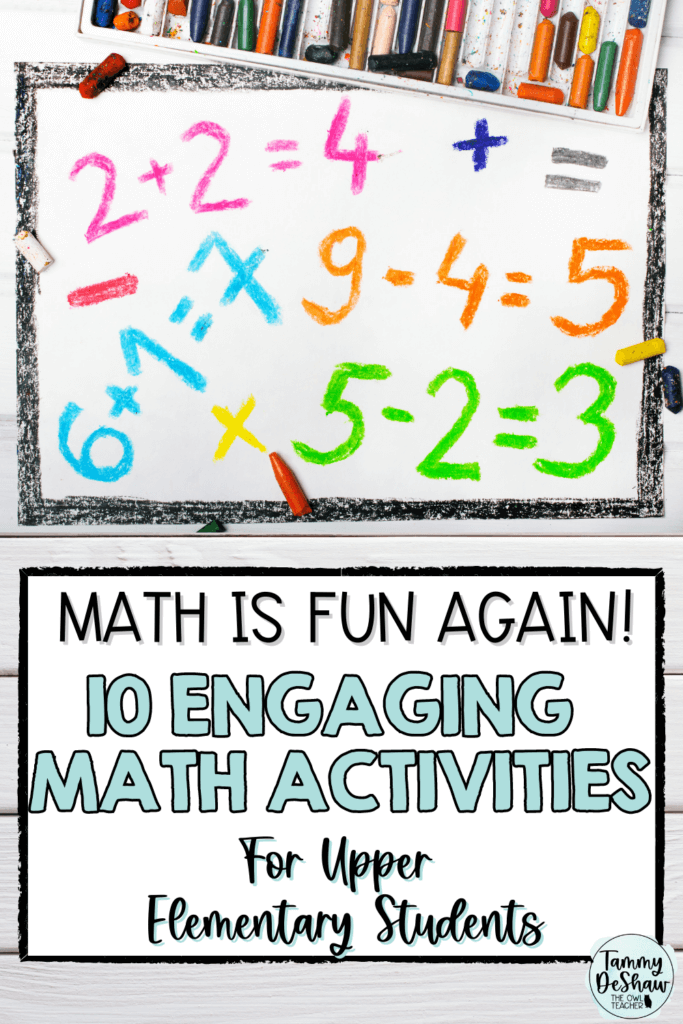
The math activities that I list below are activities that you should be able to do in virtually any upper elementary math content or topic. They can be used in math centers , as independent work, as a whole class activity, or in any way you desire to use them.
1. Math Literature . There are a large variety of books out there that teach math concepts in both the fiction and nonfiction genres that are engaging and fun. These books can be used in a mini-lesson of math workshop , as an entire math lesson itself, or as a starting point for a math unit. They can also be used for math problems or math work! Check out my Math Literature post to learn more .
2. Math Quests. When I was a child, my favorite books were the Create Your Own Adventure stories. I may be much (much!) older now, but I am still a child at heart. I just had to implement this theme into a math resource and thus, Math Quests were born. In these math quests, students work through math problems and a series of choices that take them on an engaging math adventure. Students love these math activities, it’s a great use of technology, and incorporates reading! You can’t go wrong here. You can learn more about Math Quests by checking out my post Math Quests: Choose Your Own Math Adventure .
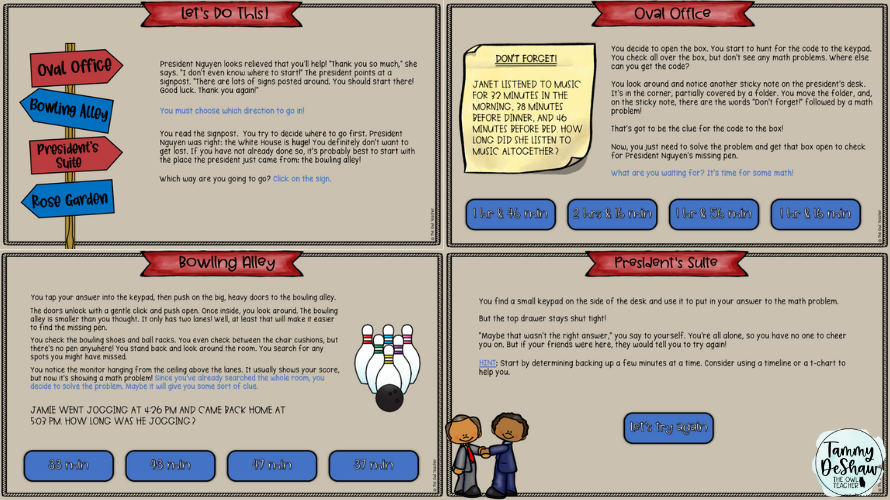
3. Math Songs and Chants. Anytime you bring in rapping, songs, or mnemonics, children tend to remember things much better. In addition to meeting the learning style of some students, it’s also an engaging way to get students up and moving around a bit. (And is it just me, or do songs tend to stay in your head for a while?). Take any popular children’s song and change the lyrics to something about the math concept. It makes it catchy and fun for the children! Here’s an example of a circle song that we created one year to the “Wheels on the Bus” song that the kids just loved!

4. Math Games . I love using math games in the classroom. If you were to stop by my TpT store you would see that I have several math games beyond what’s listed below (and more coming!). There are a variety of games out there that work well to help your students review important math skills and are engaging!
For example, there’s Placing the M&M’s which helps students practice place value of larger numbers…

Or Multiplication Fixation where students practice fact fluency. And, really, what child couldn’t use a little extra practice with their multiplication facts?

5. Mysteries. I don’t think there are many people in the world that don’t love a good mystery. I could be wrong. Mysteries are engaging, involve critical thinking, and generally create this need to complete it before you move on. This all applies to children too! So how can you bring mysteries into the classroom? Why not try my mystery cards ? Students work through a set of cards answering math questions and the answer brings them one step closer to solving the mystery.

6. Color By Number. Color-by-number math activities work as a great early finisher activity and allow students to review the math concept they need to work on. Students enjoy coloring (I do too still as an adult) and it keeps them quiet for those few minutes when you need to just take a quick breather.
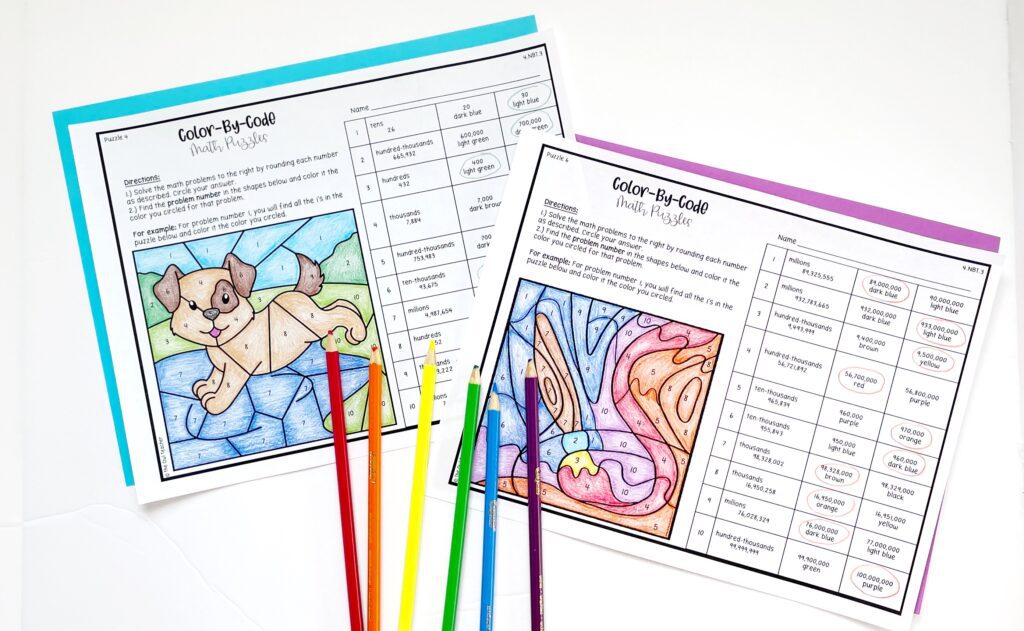
7. Math Puzzles. Puzzles are the perfect math activities to use in centers or for an early finisher activity. Students can also use these independently as a way to review important math concepts because they are self-checking. The puzzles I’m referring to are my Start2Finish Puzzles . In these puzzles, students begin with the start strip that has a math problem on it. Then they find the next strip that has the answer to that start strip in a star. They continue down the line until they end up with the finish strip. Students really love these puzzles!

8. Riddles. Ever since I was a kid I have always loved riddles, puns, and jokes. If you throw mystery in (as described above), you have quite the equation. There are many math picture books out there that include riddles, especially if you are familiar with Greg Tang that you can use to engage your students during math. Another option would be resources that reveal the answers to riddles and puns as students complete the resource such as my mixed-up mystery puzzles . Students cut out the mixed-up squares and glue the answer on top of the matching problem. When finished, the answer to the riddle will be revealed. Students can then color the image if they desire.

9. Project-Based Learning. I have definitely talked about project-based learning many times before on my site. A quick search in the bar over there will pull up many previous posts including Online PBL Projects for Elementary Students and Teaching Area Using Applied Math . Project-based learning allows students to apply their math skills to real-life situations and to use their higher-level thinking skills. The one below is my Area and Perimeter PBL Where students move furniture around to design their house.

10. Technology. What kid doesn’t love technology? While the majority of my resources do have both digital and print versions, I have some that are only digital. For instance, teachers love my riddle reveal cards where students practice math skills through the Boom Card Platform. As they progress, they uncover a picture that reveals a riddle. It’s the perfect activity for reviewing important math concepts.

These activities are all perfect for practicing and reviewing important math skills or for math centers in your classroom. You can also use them for early finishers. With these 10 engaging math activities, your students are sure to love math again!

- Engagement , Math , Math Featured , Planning

FIND IT NOW!
Check me out on tpt.

CHECK THESE OUT

Three Types of Rocks and Minerals with Rock Cycle Circle Book

Partitioning Shapes Equal Share Fractions Halves, Thirds, Fourths Math Puzzles
Want to save time?
COPYRIGHT © 2016-2024. The Owl Teacher | Privacy page | Disclosure Page | Shipping | Returns/Refunds
BOGO on EVERYTHING!
Numbers, Facts and Trends Shaping Your World
Read our research on:
Full Topic List
Regions & Countries
- Publications
- Our Methods
- Short Reads
- Tools & Resources
Read Our Research On:
What the data says about Americans’ views of climate change

A recent report from the United Nations’ Intergovernmental Panel on Climate Change has underscored the need for international action to avoid increasingly severe climate impacts in the years to come. Steps outlined in the report, and by climate experts, include major reductions in greenhouse gas emissions from sectors such as energy production and transportation.
But how do Americans feel about climate change, and what steps do they think the United States should take to address it? Here are eight charts that illustrate Americans’ views on the issue, based on recent Pew Research Center surveys.
Pew Research Center published this collection of survey findings as part of its ongoing work to understand attitudes about climate change and energy issues. The most recent survey was conducted May 30-June 4, 2023, among 10,329 U.S. adults. Earlier findings have been previously published, and methodological information, including the sample sizes and field dates, can be found by following the links in the text.
Everyone who took part in the June 2023 survey is a member of the Center’s American Trends Panel (ATP), an online survey panel that is recruited through national, random sampling of residential addresses. This way, nearly all U.S. adults have a chance of selection. The survey is weighted to be representative of the U.S. adult population by gender, race, ethnicity, partisan affiliation, education and other categories. Read more about the ATP’s methodology .
Here are the questions used for this analysis , along with responses, and its methodology .
A majority of Americans support prioritizing the development of renewable energy sources. Two-thirds of U.S. adults say the country should prioritize developing renewable energy sources, such as wind and solar, over expanding the production of oil, coal and natural gas, according to a survey conducted in June 2023.
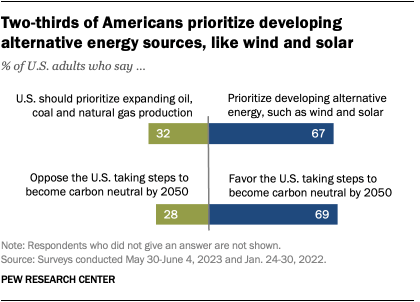
In a previous Center survey conducted in 2022, nearly the same share of Americans (69%) favored the U.S. taking steps to become carbon neutral by 2050 , a goal outlined by President Joe Biden at the outset of his administration. Carbon neutrality means releasing no more carbon dioxide into the atmosphere than is removed.
Nine-in-ten Democrats and Democratic-leaning independents say the U.S. should prioritize developing alternative energy sources to address America’s energy supply. Among Republicans and Republican leaners, 42% support developing alternative energy sources, while 58% say the country should prioritize expanding exploration and production of oil, coal and natural gas.
There are important differences by age within the GOP. Two-thirds of Republicans under age 30 (67%) prioritize the development of alternative energy sources. By contrast, 75% of Republicans ages 65 and older prioritize expanding the production of oil, coal and natural gas.
Americans are reluctant to phase out fossil fuels altogether, but younger adults are more open to it. Overall, about three-in-ten adults (31%) say the U.S. should completely phase out oil, coal and natural gas. More than twice as many (68%) say the country should use a mix of energy sources, including fossil fuels and renewables.
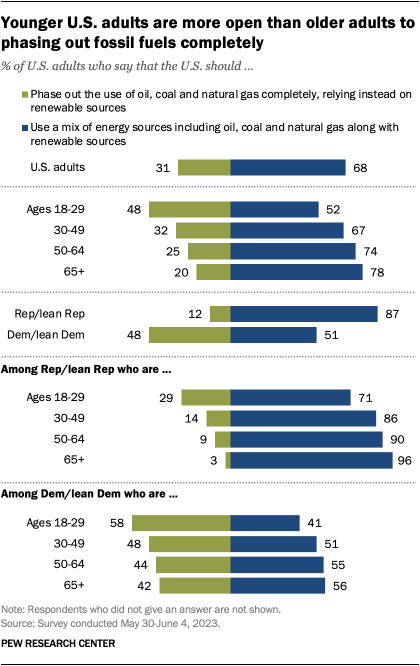
While the public is generally reluctant to phase out fossil fuels altogether, younger adults are more supportive of this idea. Among Americans ages 18 to 29, 48% say the U.S. should exclusively use renewables, compared with 52% who say the U.S. should use a mix of energy sources, including fossil fuels.
There are age differences within both political parties on this question. Among Democrats and Democratic leaners, 58% of those ages 18 to 29 favor phasing out fossil fuels entirely, compared with 42% of Democrats 65 and older. Republicans of all age groups back continuing to use a mix of energy sources, including oil, coal and natural gas. However, about three-in-ten (29%) Republicans ages 18 to 29 say the U.S. should phase out fossil fuels altogether, compared with fewer than one-in-ten Republicans 50 and older.
There are multiple potential routes to carbon neutrality in the U.S. All involve major reductions to carbon emissions in sectors such as energy and transportation by increasing the use of things like wind and solar power and electric vehicles. There are also ways to potentially remove carbon from the atmosphere and store it, such as capturing it directly from the air or using trees and algae to facilitate carbon sequestration.
The public supports the federal government incentivizing wind and solar energy production. In many sectors, including energy and transportation, federal incentives and regulations significantly influence investment and development.
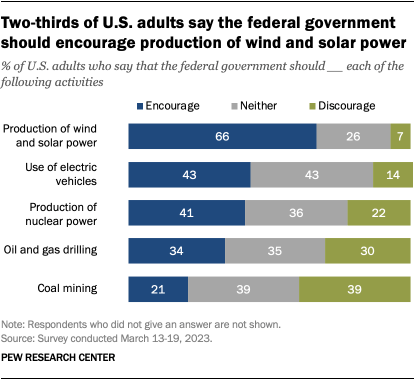
Two-thirds of Americans think the federal government should encourage domestic production of wind and solar power. Just 7% say the government should discourage this, while 26% think it should neither encourage nor discourage it.
Views are more mixed on how the federal government should approach other activities that would reduce carbon emissions. On balance, more Americans think the government should encourage than discourage the use of electric vehicles and nuclear power production, though sizable shares say it should not exert an influence either way.
When it comes to oil and gas drilling, Americans’ views are also closely divided: 34% think the government should encourage drilling, while 30% say it should discourage this and 35% say it should do neither. Coal mining is the one activity included in the survey where public sentiment is negative on balance: More say the federal government should discourage than encourage coal mining (39% vs. 21%), while 39% say it should do neither.
Americans see room for multiple actors – including corporations and the federal government – to do more to address the impacts of climate change. Two-thirds of adults say large businesses and corporations are doing too little to reduce the effects of climate change. Far fewer say they are doing about the right amount (21%) or too much (10%).
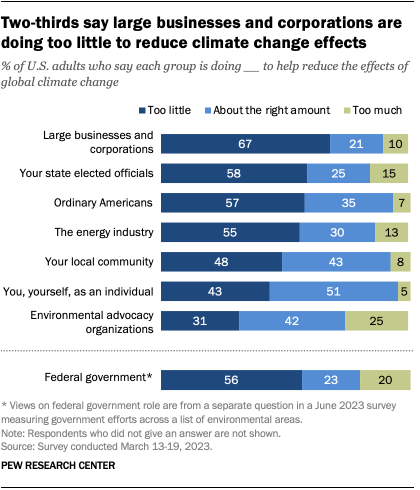
Majorities also say their state elected officials (58%) and the energy industry (55%) are doing too little to address climate change, according to a March 2023 survey.
In a separate Center survey conducted in June 2023, a similar share of Americans (56%) said the federal government should do more to reduce the effects of global climate change.
When it comes to their own efforts, about half of Americans (51%) think they are doing about the right amount as an individual to help reduce the effects of climate change, according to the March 2023 survey. However, about four-in-ten (43%) say they are doing too little.
Democrats and Republicans have grown further apart over the last decade in their assessments of the threat posed by climate change. Overall, a majority of U.S. adults (54%) describe climate change as a major threat to the country’s well-being. This share is down slightly from 2020 but remains higher than in the early 2010s.
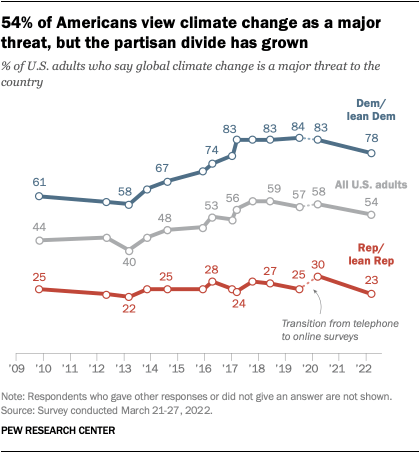
Nearly eight-in-ten Democrats (78%) describe climate change as a major threat to the country’s well-being, up from about six-in-ten (58%) a decade ago. By contrast, about one-in-four Republicans (23%) consider climate change a major threat, a share that’s almost identical to 10 years ago.
Concern over climate change has also risen internationally, as shown by separate Pew Research Center polling across 19 countries in 2022. People in many advanced economies express higher levels of concern than Americans . For instance, 81% of French adults and 73% of Germans describe climate change as a major threat.
Climate change is a lower priority for Americans than other national issues. While a majority of adults view climate change as a major threat, it is a lower priority than issues such as strengthening the economy and reducing health care costs.
Overall, 37% of Americans say addressing climate change should be a top priority for the president and Congress in 2023, and another 34% say it’s an important but lower priority. This ranks climate change 17th out of 21 national issues included in a Center survey from January.
As with views of the threat that climate change poses, there’s a striking contrast between how Republicans and Democrats prioritize the issue. For Democrats, it falls in the top half of priority issues, and 59% call it a top priority. By comparison, among Republicans, it ranks second to last, and just 13% describe it as a top priority.
Our analyses have found that partisan gaps on climate change are often widest on questions – such as this one – that measure the salience or importance of the issue. The gaps are more modest when it comes to some specific climate policies. For example, majorities of Republicans and Democrats alike say they would favor a proposal to provide a tax credit to businesses for developing technologies for carbon capture and storage.
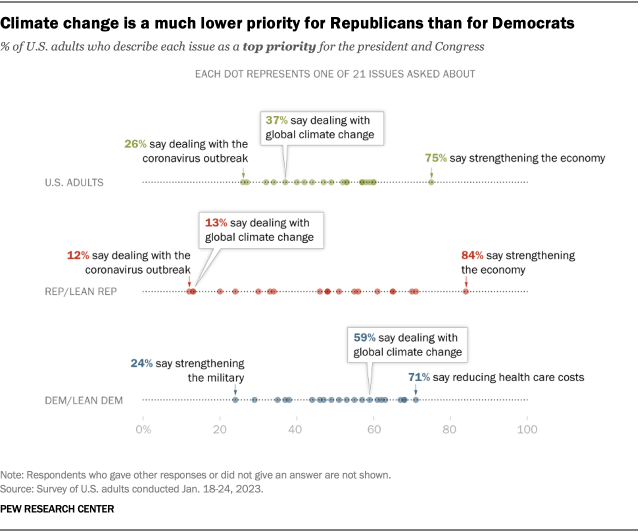
Perceptions of local climate impacts vary by Americans’ political affiliation and whether they believe that climate change is a serious problem. A majority of Americans (61%) say that global climate change is affecting their local community either a great deal or some. About four-in-ten (39%) see little or no impact in their own community.
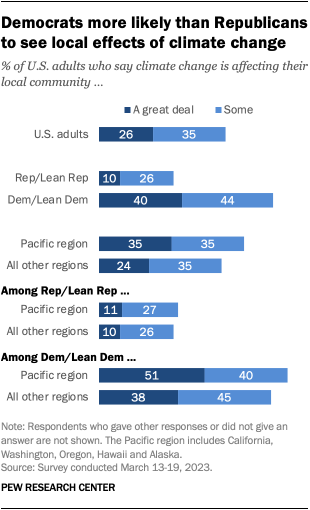
The perception that the effects of climate change are happening close to home is one factor that could drive public concern and calls for action on the issue. But perceptions are tied more strongly to people’s beliefs about climate change – and their partisan affiliation – than to local conditions.
For example, Americans living in the Pacific region – California, Washington, Oregon, Hawaii and Alaska – are more likely than those in other areas of the country to say that climate change is having a great deal of impact locally. But only Democrats in the Pacific region are more likely to say they are seeing effects of climate change where they live. Republicans in this region are no more likely than Republicans in other areas to say that climate change is affecting their local community.
Our previous surveys show that nearly all Democrats believe climate change is at least a somewhat serious problem, and a large majority believe that humans play a role in it. Republicans are much less likely to hold these beliefs, but views within the GOP do vary significantly by age and ideology. Younger Republicans and those who describe their views as moderate or liberal are much more likely than older and more conservative Republicans to describe climate change as at least a somewhat serious problem and to say human activity plays a role.
Democrats are also more likely than Republicans to report experiencing extreme weather events in their area over the past year – such as intense storms and floods, long periods of hot weather or droughts – and to see these events as connected with climate change.
About three-quarters of Americans support U.S. participation in international efforts to reduce the effects of climate change. Americans offer broad support for international engagement on climate change: 74% say they support U.S. participation in international efforts to reduce the effects of climate change.
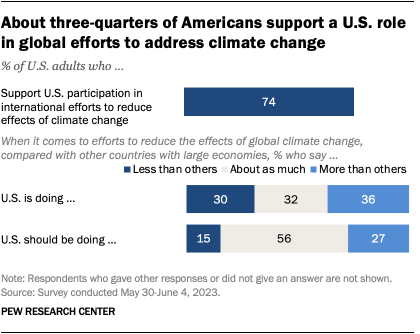
Still, there’s little consensus on how current U.S. efforts stack up against those of other large economies. About one-in-three Americans (36%) think the U.S. is doing more than other large economies to reduce the effects of global climate change, while 30% say the U.S. is doing less than other large economies and 32% think it is doing about as much as others. The U.S. is the second-largest carbon dioxide emitter , contributing about 13.5% of the global total.
When asked what they think the right balance of responsibility is, a majority of Americans (56%) say the U.S. should do about as much as other large economies to reduce the effects of climate change, while 27% think it should do more than others.
A previous Center survey found that while Americans favor international cooperation on climate change in general terms, their support has its limits. In January 2022 , 59% of Americans said that the U.S. does not have a responsibility to provide financial assistance to developing countries to help them build renewable energy sources.
In recent years, the UN conference on climate change has grappled with how wealthier nations should assist developing countries in dealing with climate change. The most recent convening in fall 2022, known as COP27, established a “loss and damage” fund for vulnerable countries impacted by climate change.
Note: This is an update of a post originally published April 22, 2022. Here are the questions used for this analysis , along with responses, and its methodology .
- Climate, Energy & Environment
- Environment & Climate
- Partisanship & Issues
- Political Issues

How Republicans view climate change and energy issues
How americans view future harms from climate change in their community and around the u.s., americans continue to have doubts about climate scientists’ understanding of climate change, growing share of americans favor more nuclear power, why some americans do not see urgency on climate change, most popular.
1615 L St. NW, Suite 800 Washington, DC 20036 USA (+1) 202-419-4300 | Main (+1) 202-857-8562 | Fax (+1) 202-419-4372 | Media Inquiries
Research Topics
- Age & Generations
- Coronavirus (COVID-19)
- Economy & Work
- Family & Relationships
- Gender & LGBTQ
- Immigration & Migration
- International Affairs
- Internet & Technology
- Methodological Research
- News Habits & Media
- Non-U.S. Governments
- Other Topics
- Politics & Policy
- Race & Ethnicity
- Email Newsletters
ABOUT PEW RESEARCH CENTER Pew Research Center is a nonpartisan fact tank that informs the public about the issues, attitudes and trends shaping the world. It conducts public opinion polling, demographic research, media content analysis and other empirical social science research. Pew Research Center does not take policy positions. It is a subsidiary of The Pew Charitable Trusts .
Copyright 2024 Pew Research Center
Terms & Conditions
Privacy Policy
Cookie Settings
Reprints, Permissions & Use Policy

IMAGES
VIDEO
COMMENTS
Students will have to research the cost of travel, lodging, meals, and leisure activities to cover a 7-10 day vacation to a location of their choosing. Math Project Ideas: Budget and Plan Your Dream Vacation. 6.) Build a Fraction Kit. Grade Levels: 3-8+.
Math projects can not only invigorate and inspire students, but they can also provide opportunities to practice problem-solving and creativity. 12 Math Project Ideas for Elementary Students. Students will love the challenge and fun of these math project ideas for elementary. They work well as an opening activity or as a complete lesson! You can ...
Euler's Disk. Euler's disk is a heavy disk and such a remarkable science toy that every science teacher should have one. The Euler's disk is for teaching the relationship between magnetics ...
Description: Write the numbers 1 to 9 in one row and 0 in the next row to make a baseball diamond. Help your students write math facts such as doubles (2 + 2, 3 + 3, etc.), near doubles (9 + 8), addition/subtraction of 10 (8 + 2, 5 + 5), and related subtraction facts (7 - 3, 9 - 6) on the number cards.
Math. Project Ideas for Elementary. 1. Math Board Games: Create fun games like "Math Bingo" to reinforce arithmetic skills. 2. Shape Hunt: Have students find and classify shapes in their environment. 3. Math Storybooks: Write and illustrate stories incorporating math problems for each chapter. Engage elementary students with 11 creative math ...
How To Use Math Projects. Cumulative review or assessment project for end of unit. Each of my math projects is designed to show mastery of MULTIPLE skills related to the concept at hand. Many eliminate the need for traditional assessments, which is a win-win for both students and teachers. As seasonal practice.
Pure Mathematics Science Projects. (43 results) Wikipedia defines mathematics as "the study of quantity, structure, space and change." With a definition like that, it's easy to see why math is often called "the language of science." Math is essential for analyzing and communicating scientific results, and for stating scientific theories in a ...
Write down twenty arithmetic questions, for instance, 8 + 5, 2 + 1, and 5 + 9. Write your answer and ensure it is done on the same page. Use a web generator or make your 5×5 bingo cards. Put the solutions from your list on the cards randomly and write the answers. Each pupil must have their bingo card.
Elementary School Science Projects. (693 results) Science Buddies' elementary school science projects are the perfect way for elementary school students to have fun exploring science, technology, engineering, and math (STEM). Our elementary school projects are written and tested by scientists and are specifically created for use by students in ...
Ask them to identify what math is involved in the game. Invite students to play the game. Donate the games to the school. Math Author—Students write a math book that features a math concept and then illustrate the book. They research other types of math books, from the school or local libraries to create their own math "literature" book.
These maths projects help in developing very important mathematical skills like:-. Correlating the concepts taught in the classes with the practical applications of those concepts. Proving a hand on experience to the children. Fostering teamwork, coordination, and communication along with creativity and knowledge.
2.) Dream Home Design Project. Grade Levels: Grades 1-8+ Description: For this fun math art project, students are tasked with designing the floor plans for their dream homes and backyards by applying math skills including measurement, scale, area, and perimeter. Students can use graph paper and markers or digital tools like Google Sketchup to create their home's blueprints, calculate the ...
Table 2.2. A mathematical language chart that supports early elementary \(grade K 2\) students as they use mathematical language to present their thinking. Table 2.3. A mathematical language chart that supports upper elementary \(grade 3 6\) students as they use mathematical language to present their thinking. Table 3.1.
The Classroom Challenges are central to Research for Action's report on the MDC's Influence on Teaching and Learning. Free to Schools. ... The Mathematics Assessment Project is part of the Math Design Collaborative initiated by the Bill & Melinda Gates Foundation. The project set out to design and develop well-engineered tools for formative ...
Project-based learning, as defined by President of PBL Global Thom Markham, Ph.D., is a method that seamlessly integrates 21st century skills — such as communication and teamwork — into core academic subjects. This approach provides a tangible connection between academic concepts and their practical applications.
Contact us: For support within Minnesota, contact James Brickwedde at [email protected] For support nationally, contact Linda Levi at CGI Math Teacher Learning Center: [email protected]. The Project for Elementary Mathematics explores how children think and develop their mathematical understandings.
Design a House. Using online PBL projects in Math makes learning so relevant for your students. First, one of my favorite projects to reinforce area and perimeter concepts is to have students design their own house. First, students place furniture in a house. Then, they determine the area by estimating the squares remaining on the grid after ...
Source: kidsacademy.mobi. One exciting hands-on math activity for elementary students involves using math manipulatives like building blocks or interlocking cubes to create various geometric shapes. Start by introducing basic shapes like squares, rectangles, triangles, and circles. Then, challenge students to use the manipulatives to construct ...
Educational innovations in elementary mathematics learning in Indonesia have not been clearly described in a systematic way leading to the lack of future learning and research directions. Several recent literature reviews about Indonesian mathematics learning merely conceptually discuss particular issues such as project-based
Focus on research Len Pikaart Topics for research studies in elementary school mathematics C. ALAN RIEDESEL JL he past decade has been a time of un-precedented change in elementary school mathematics. During this period the think-ing of teachers, mathematics educators, and mathematicians was tapped to develop new mathematics programs for the ...
Spring 2019 An Inquiry into Inquiry-Based Learning in the Mathematics Classroom Mindset Matters in Mathematics: ... MATH E-599 Teaching Projects Capstone Course: Past Capstones and Examples . Sample Titles - Group 1 ... A Strategic Plan to Implement Nazi-Era Provenance Research at the Williams College Museum of Art
Quality #4: Cold calling. Research: Teachers developing assessment for learning: impact on student achievement. Resource: Teach Like a Champion. Of all the qualities listed here, cold calling is one of the most effective math instructional strategies. And yes, I mean cold calling like pulling popsicle sticks to get students to answer.
251+ Math Research Topics: Beginners To Advanced. Prime Number Distribution in Arithmetic Progressions. Diophantine Equations and their Solutions. Applications of Modular Arithmetic in Cryptography. The Riemann Hypothesis and its Implications. Graph Theory: Exploring Connectivity and Coloring Problems.
Understanding academic language specific to subjects like mathematics is crucial for students to grasp domain knowledge. The ability to use mathematically accurate language is a key indicator of math mastery, yet research quantifying this relationship remains scarce. Traditional classroom observations, the main method for evaluating pedagogical practices, suffer from limitations in time ...
The research conducted was a quantitative study with a quasi-experimental design (pseudo-experiment). The population in this study were elementary school teacher education students, Faculty of Education, Padang State University. The sample in this study were Elementary School Teacher Education students, Faculty of Education, Padang State University who were studying mathematics in high grades ...
6. Color By Number. Color-by-number math activities work as a great early finisher activity and allow students to review the math concept they need to work on. Students enjoy coloring (I do too still as an adult) and it keeps them quiet for those few minutes when you need to just take a quick breather. 7.
Pew Research Center published this collection of survey findings as part of its ongoing work to understand attitudes about climate change and energy issues. The most recent survey was conducted May 30-June 4, 2023, among 10,329 U.S. adults. ... Views are more mixed on how the federal government should approach other activities that would reduce ...
Zillow has 10239 homes for sale in Houston TX. View listing photos, review sales history, and use our detailed real estate filters to find the perfect place.